13 World-Famous Bluewater Sailboats Under 40 Feet
Bluewater sailboats are designed to handle long-distance cruising in open water, so they need to be tough, reliable, and seaworthy. If you want to set sail on a bluewater adventure but don't want a massive yacht, here are 13 of the world's most famous bluewater sailboats under 40 feet that can handle the open sea with ease.
The 13 world-famous bluewater sailboats are:
- Contessa 32
- Cape Dory 36
- Island Packet 35
- Westsail 32
- Bristol Channel Cutter 28
- Albin Vega 27
- Southern Cross 31
A bluewater sailboat should be self-righting or extremely seaworthy, like a large catamaran. Let's look at what other key features you should look for in a bluewater sailboat to ensure your safety, comfort, and enjoyment during long-term open-sea cruising.
- The Contessa 32 has a moderate sail area that makes it easy to handle even in challenging sea conditions.
- The Cape Dory 36 is generally known as a fast bluewater sailboat that can easily reach speeds of up to 7 knots under sail.
- The Island Packet 35 is equipped with a Yanmar diesel engine, which provides plenty of power to navigate through rough seas.
- An ideal length for a bluewater sailboat is at least 30–35 feet in length, but boats such as the Dana 24 and Flicka 20 provide the same excellent stability as others despite being smaller.
- One common feature of the best bluewater sailboats is having a protected helm and accommodation that is well-protected from the elements.
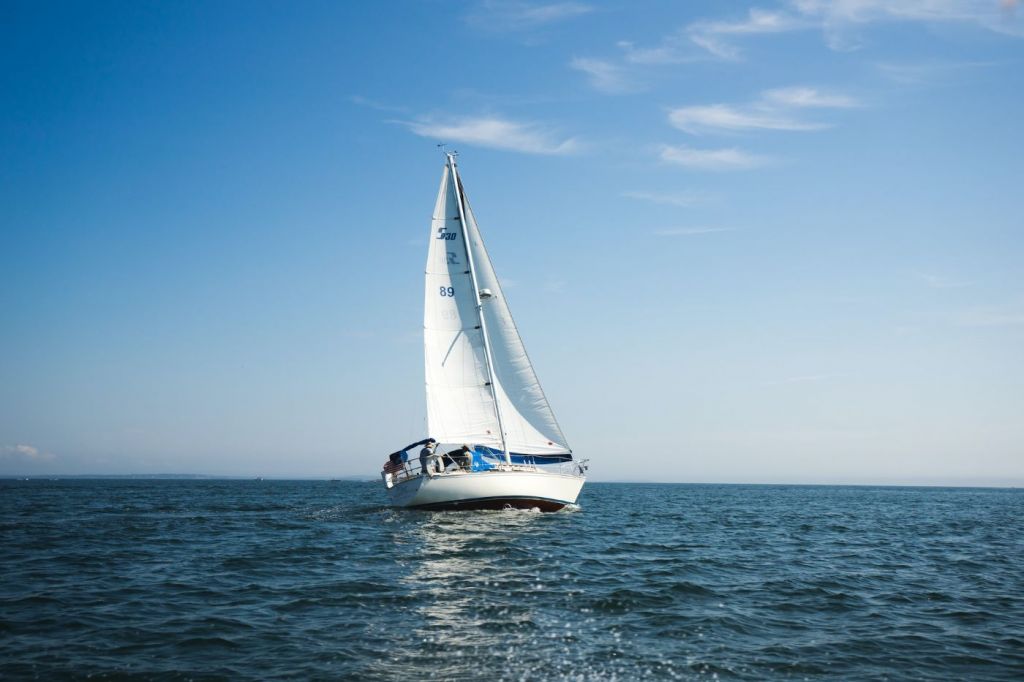

Top 13 Bluewater Sailboats Under 40 Feet
Here are 13 world-famous bluewater sailboats under 40 feet that you should consider to take you on long-distance voyages:
| David Sadler | 32 feet | Long keel, narrow beam, moderate displacement, stable and seaworthy | |
| W.I.B. Crealock | 27 feet | Full keel, hand-laid fiberglass hull, versatile and sturdy, excellent sailing performance | |
| Carl Alberg | 36 feet | Classic design, seaworthy and reliable, fast and responsive, full keel | |
| Sparkman & Stephens | 37 feet | Sleek, low profile, narrow beam, deep keel, fast and comfortable, powerful sail plan | |
| Bob Johnson | 35 feet | Spacious and well-designed, full keel, cutter rig | |
| William Crealock | 32 feet | Legendary bluewater cruiser, full keel, heavy displacement, seaworthy and stable | |
| Chuck Paine | 26 feet | Beautiful and capable, classic, full-keeled, cutter-rigged sailboat, seaworthy and stable | |
| Lyle Hess | 28 feet | Traditional design, full keel, heavy displacement hull, high-quality materials | |
| Per Brohall | 27 feet | Compact and affordable bluewater cruiser, full keel, moderate displacement hull, capable and seaworthy | |
| Robert Perry | 30 feet | Classic and well-respected sailboat, full keel, inspired by traditional Japanese fishing boats, well-balanced helm | |
| Thomas Gillmer | 31 feet | Sturdy and comfortable cruiser, full keel, moderate displacement hull, solid fiberglass construction | |
| Bruce Bingham | 20 feet | Small but mighty bluewater sailboat, full keel, sturdy construction, timeless design, easy to handle | |
| Lyle Hess | 27 feet | Compact and seaworthy vessel, full keel, cutter rig, easily trailerable |
1. The Contessa 32 is a classic bluewater cruiser
History and design of the contessa 32.
The Contessa 32 has been around since the early 1970s and was designed by David Sadler and built by Jeremy Rogers Ltd in Lymington, England. The boat was originally designed for racing, but it quickly gained popularity as a cruising sailboat due to its seaworthiness and comfort.
This boat has a long keel, a narrow beam, and a moderate displacement. It has a length overall of 32 feet, a beam of 9 feet, and a draft of 5 feet 6 inches. It is typically rigged as a masthead sloop, with a mainsail and a genoa.
Performance and handling of the Contessa 32
The Contessa 32 is known for its ability to handle rough seas and heavy winds. It has a moderate sail area, which makes it easy to handle even in challenging conditions.
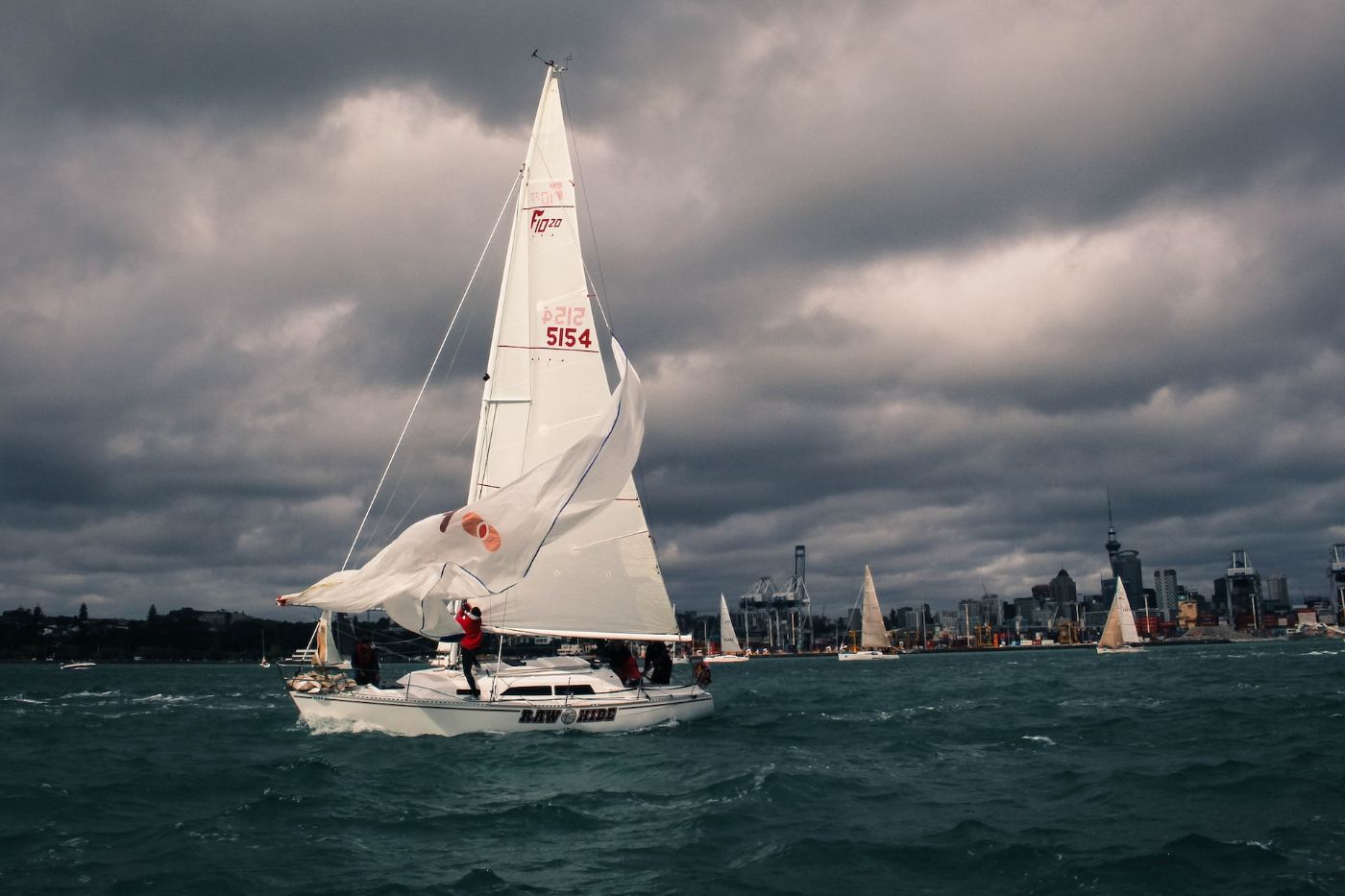
Features and amenities of the Contessa 32
This bluewater sailboat has a comfortable and well-designed interior that can accommodate up to four people. It has a v-berth in the bow, a saloon with a settee on each side, a galley, and a head. The interior is finished in teak, which gives it a warm and classic look.
It also has a large cockpit with high coamings, which provides good protection from the elements. It has a deep and secure cockpit, which makes it easy to move around on deck even in rough seas. The boat also has a good-sized fuel and water tank, which allows for extended cruising.
2. Dana 24 is a versatile and sturdy bluewater sailboat
History and design of the dana 24.
The Pacific Seacraft Dana 24 is a versatile and sturdy sailboat designed by W.I.B. Crealock and built by Pacific Seacraft. It has a length overall of 27 feet, 4 inches, a beam of 8 feet, 7 inches, and a draft of 3 feet, 10 inches. The boat is typically rigged as a cutter, with a mainsail, jib, and staysail.
The boat has a full keel , which provides stability and tracking ability. The hull is hand-laid fiberglass, which is known for being durable and long-lasting. The boat also has a solid teak cabin top, which adds to its classic look and provides good protection from the elements.
Sailing performance of the Dana 24
The Dana 24 has a high aspect ratio sail plan, which makes it easy to handle and gives it good speed. The cutter rig allows for a variety of sail configurations, which makes it versatile in a range of conditions. The boat also has a relatively low displacement, which contributes to its speed and agility.
Features and amenities of the Dana 24
Some of the key features of the Dana 24 include:
- A spacious cockpit with comfortable seating for up to six people
- A well-designed interior with a V-berth, a galley, a head, and a salon area
- Ample storage space throughout the boat, including lockers and shelves
- A reliable and efficient Yanmar diesel engine
- A sturdy and seaworthy hull that can handle a variety of weather conditions
- A sail plan that is easy to handle and can be adjusted for different wind conditions
- A variety of optional upgrades and accessories, including a dodger, a bimini, and a swim ladder.
3. Cape Dory 36 is a timeless beauty with exceptional performance
History and design of the cape dory 36.
The Cape Dory 36 is a classic sailboat that was designed by Carl Alberg , who was known for his expertise in designing seaworthy boats that could handle rough waters with ease. It was first introduced in 1978 and was produced until 1990.
During this time, it gained a reputation as a reliable and seaworthy vessel that was perfect for cruising and offshore sailing. It is made of fiberglass and has a full keel that provides excellent stability and performance in rough seas. The boat's displacement is 19,500 pounds, and it has a waterline length of 27 feet.
Sailing performance of the Cape Dory 36
The Cape Dory 36 is known as a fast boat that can easily reach speeds of up to 7 knots under sail. It is also very stable in rough seas and can handle heavy winds with ease. The boat's full keel provides excellent tracking and stability.
Features and amenities of the Cape Dory 36
The Cape Dory 36 has a classic design that is both beautiful and functional. It was designed to be a comfortable and spacious boat that could accommodate a small family or a group of friends. It has a traditional layout with a center cockpit, a spacious cabin, and a large aft cabin.
It has a raised cabin top that provides excellent headroom in the cabin and a large cockpit that is perfect for entertaining guests. The boat has a traditional rig with a full-batten mainsail and a roller furling jib, a self-tailing winch , and a boom vang, which makes it easy to handle even in heavy winds. It also comes with a head with a shower, to stay clean and comfortable even on extended trips.
4. Tartan 37 is a fast and comfortable bluewater cruiser
History and design of the tartan 37.
The Tartan 37 is a classic bluewater cruiser that was first introduced in 1976 and was designed by Sparkman & Stephens, a renowned naval architecture firm. The Tartan 37 was built by Tartan Yachts, a company known for its high-quality sailboats.
The design of the Tartan 37 is based on the classic lines of traditional cruising yachts. It has a long waterline and a moderate displacement.
The boat has a sleek, low profile, and a narrow beam, which helps it to cut through the water with ease. The Tartan 37 has a deep keel that provides excellent stability and helps it to track well in heavy seas.
Sailing performance of the Tartan 37
One of the standout features of the Tartan 37 is that it can handle a wide range of wind conditions. It is easy to sail and can be handled by a small crew.
It also has a powerful sail plan that includes a large mainsail and a genoa. The boat has a high aspect ratio, which means that it has a large sail area relative to its size, which helps it generate a lot of power and speed.
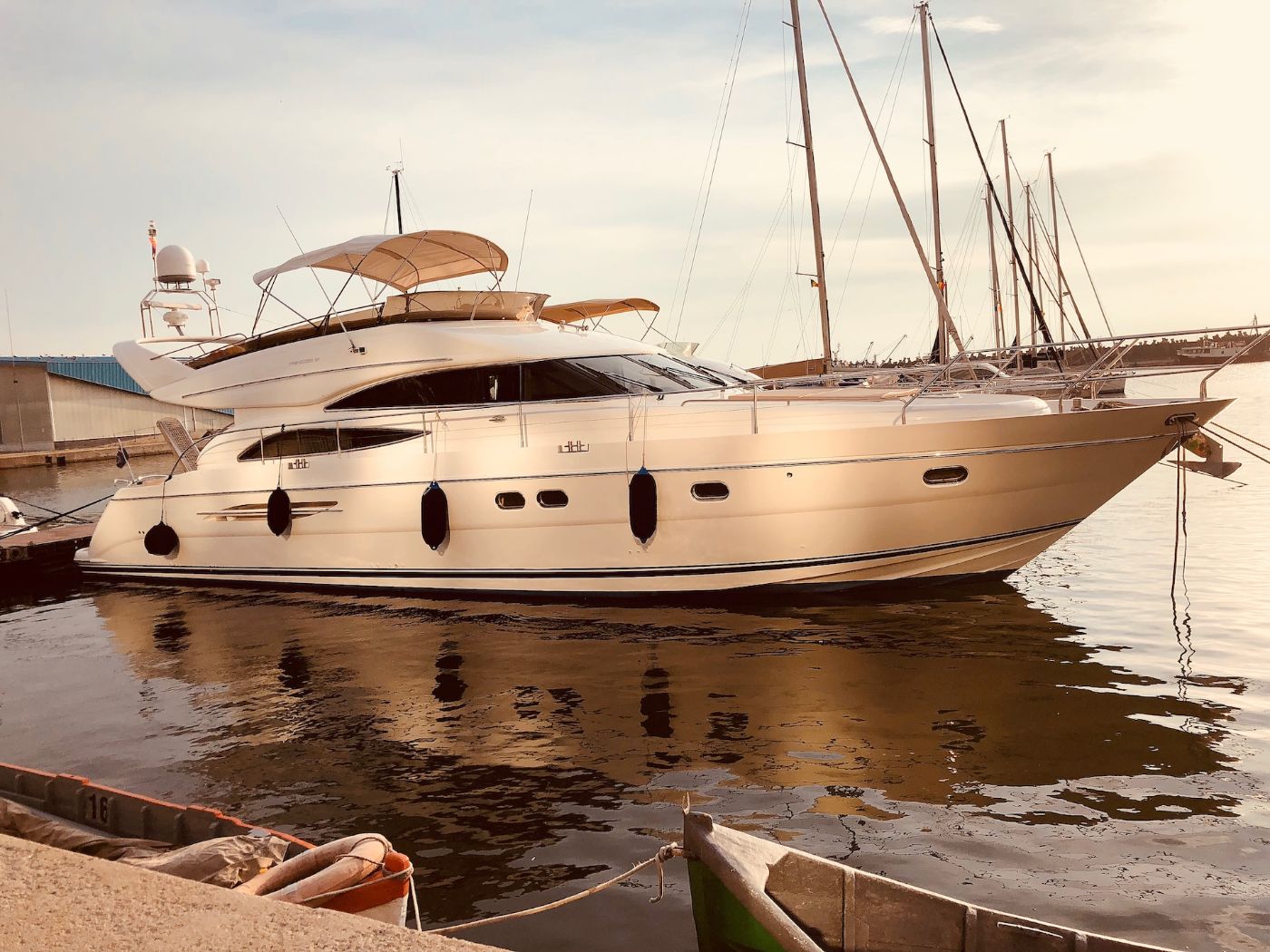
Features and amenities of the Tartan 37
The Tartan 37 is known to have a spacious and well-appointed interior that can accommodate up to six people. It has a large salon with a U-shaped settee and a dining table.
The boat also has a well-equipped galley with a stove, oven, and refrigerator. It has two private cabins, including a large aft cabin with a queen-sized berth. It also has a head with a shower and plenty of storage space.
5. Island Packet 35 is a spacious and well-designed boat
History and design of the island packet 35.
The Island Packet 35 was first introduced in 1988 by Island Packet Yachts, a company that specializes in the production of quality cruising sailboats. The boat was designed by Bob Johnson, the founder of Island Packet Yachts, and was built to be a spacious and comfortable vessel for long-range cruising.
The Island Packet 35 has a classic design that features a full keel, a cutter rig , and a spacious cockpit that is perfect for entertaining guests or relaxing in the sun.
Sailing performance of the Island Packet 35
The Island Packet 35 has a displacement of around 17,500 - 18,500 lbs and a sail area of 556 sq. ft. for the standard rig, which gives it a good balance of speed and stability. The boat is also equipped with a Yanmar diesel engine, which provides plenty of power for maneuvering in tight spaces or navigating through rough seas.
Features and amenities of the Island Packet 35
One of the standout features of the Island Packet 35 is its spacious interior. The boat has a large salon with plenty of seating and a dining table that can accommodate up to six people.
The galley has a stove, oven, refrigerator, and plenty of storage space. There are also two private cabins, one forward and one aft, each with its own head and shower.
Other amenities on the Island Packet 35 include a spacious cockpit with plenty of seating, a swim platform with a ladder, and plenty of storage space throughout the boat. It also has a number of safety features, including a sturdy lifeline system, a radar reflector, and a GPS chartplotter.
6. Westsail 32 is a proven and reliable bluewater cruiser
History and design of the westsail 32.
The Westsail 32 is a legendary bluewater cruiser designed by William Crealock in the 1970s and was built by Westsail Corporation in California.
It is a full-keeled, heavy displacement boat that has a displacement of 19,500 pounds and a ballast of 7,000 pounds. The boat has a long waterline and a narrow beam, which makes it a good performer in heavy seas.
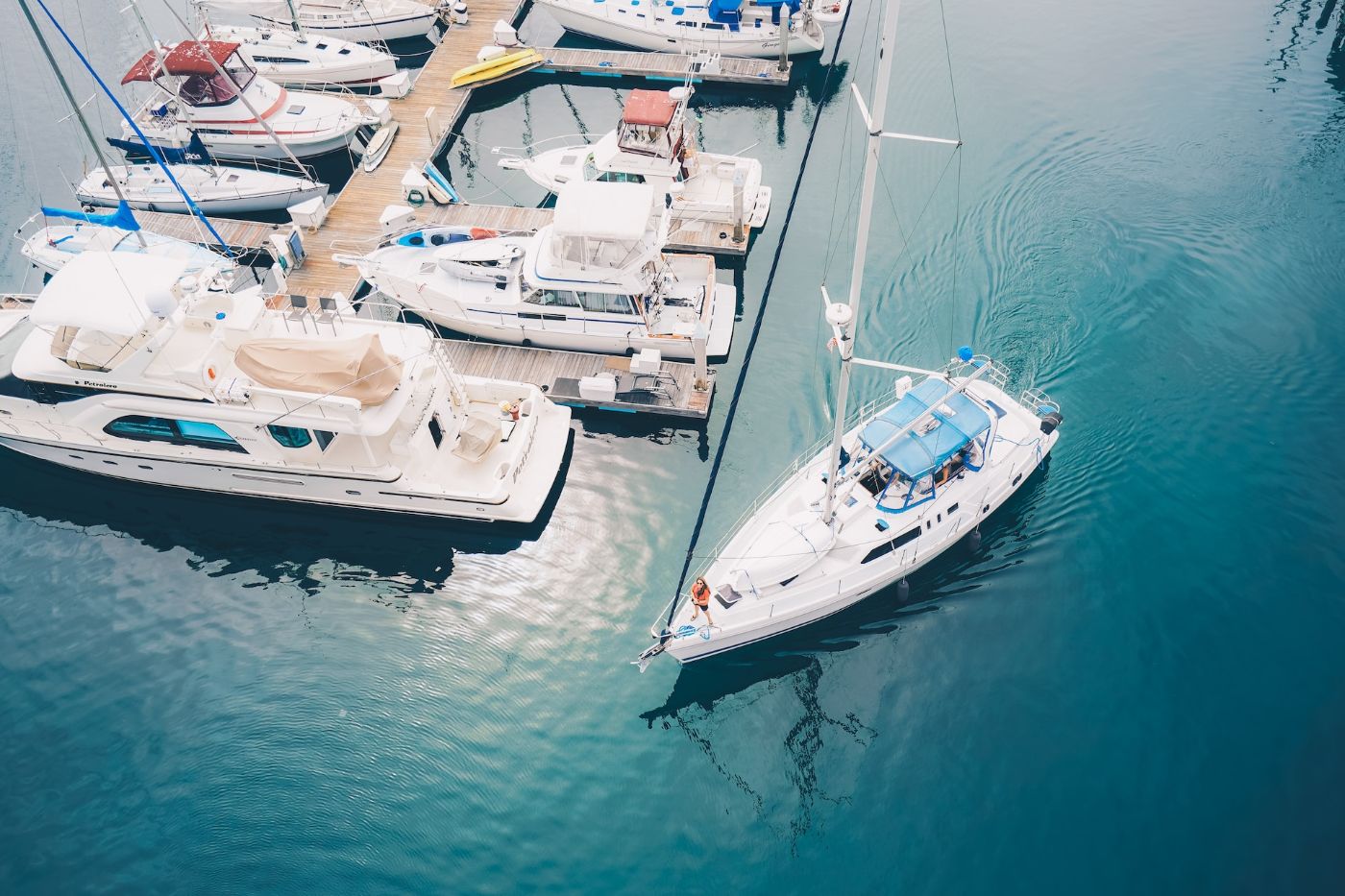
Sailing performance of the Westsail 32
This boat has a simple and traditional design with a cutter rig , which makes it easy to handle and provides a good balance of speed and stability. It has a sail area of 558 square feet, which is sufficient for most conditions and is equipped with a diesel engine, which provides reliable power when the wind is not favorable.
Features and amenities of the Westsail 32
The Westsail 32 has a spacious interior that is designed for comfort and convenience. The boat has a large salon with a U-shaped settee and a table, which can be converted into a double berth.
It also has a galley with a stove, oven, and sink, as well as a head with a shower. It is also equipped with a sturdy stainless steel bow pulpit and stern rail, which provide safety and security when working on deck. The boat also has a large cockpit with high coamings, which provides good protection from the elements.
7. Frances 26 is a beautiful and capable sailboat
History and design of the frances 26.
Frances 26 is a beautiful and capable sailboat that was designed by Chuck Paine, a renowned naval architect, and was first introduced in 1975. This boat is a classic, full-keeled, cutter-rigged sailboat that was designed to be a small, seaworthy cruiser that can handle heavy weather.
It has a displacement of 6,500 pounds and a length overall of 26 feet. The boat has a beam of 8 feet and a draft of 4 feet. The hull is made of solid fiberglass, and the deck is constructed of marine plywood and fiberglass.
Sailing performance of the Frances 26
Frances 26 is responsive and quick and can handle a variety of conditions with ease. The cutter rig is well-balanced, and the boat can be easily sailed by a single person. The full keel provides excellent stability and ensures that the boat tracks well, even in heavy seas.
Features and amenities of the Frances 26
The Frances 26 is also well-equipped with features and amenities, such as a spacious cockpit that can comfortably seat four people with the interior all well-laid out and functional.
The boat has a V-berth forward, a head, and a galley with a two-burner stove and a sink. There is also ample storage space throughout the boat, including a large lazaretto in the cockpit.
8. The Bristol Channel Cutter 28 is a traditional and strongly built boat
History and design of the bristol channel cutter 28.
The Bristol Channel Cutter 28 is a classic and robust sailboat designed by Lyle Hess, a renowned naval architect, and was first introduced in the 1960s. The design of the Bristol Channel Cutter 28 is based on the traditional working boats that were used in the Bristol Channel area of England.
The boat is built to be strong and sturdy, with a full keel and a heavy displacement hull . It is designed to handle rough seas and strong winds.
The boat is constructed using high-quality materials, including teak and mahogany woodwork, bronze fittings, and stainless steel hardware. The boat's design is simple and elegant, with a classic look that has stood the test of time.
Sailing performance of the Bristol Channel Cutter 28

Bristol Channel Cutter 28 is designed to be sailed comfortably in all weather conditions, and its full keel provides excellent directional stability. The boat is also responsive and easy to handle, making it a great choice for solo sailing or for a small crew.
Features and amenities of the Bristol Channel Cutter 28
The boat's features and amenities are designed to be functional and practical. The cockpit is spacious and comfortable, with ample room for seating and storage.
The cabin is cozy and well-appointed, with a galley, a head, and sleeping accommodations for up to four people. The boat also has a large sail plan, with a cutter rig that allows for easy sail handling and flexibility in different wind conditions.
9. Albin Vega 27 is a compact and affordable bluewater cruiser
History and design of the albin vega 27.
The Albin Vega 27 is a popular and well-known compact bluewater cruiser that was first introduced in 1966 and designed by Swedish naval architect Per Brohall. It has a classic design that features a full keel and a moderate displacement hull.
It has a length overall of 8.2 meters (27 feet) and a beam of 2.5 meters (8.2 feet). The boat has a draft of 1.2 meters (3.9 feet) and a displacement of 2,900 kg (6,393 lbs).
Sailing performance of the Albin Vega 27
In terms of performance and handling, the Vega 27 has a moderate sail plan that includes a mainsail, genoa, and spinnaker. The boat has a relatively low freeboard, which can make it a bit wet in heavy seas, but it also gives it a stable and comfortable ride.
Features and amenities of the Albin Vega 27
The Vega 27 has a spacious cockpit that can accommodate a small crew, and the interior of the boat is designed to maximize space and storage. The boat has a small galley with a sink and a two-burner stove, as well as a compact head with a marine toilet.
10. Baba 30 is a classic and well-respected sailboat
History and design of the baba 30.
Baba 30 was first introduced in the 1970s, designed by Robert Perry, a renowned naval architect. It has a classic full-keel design that was inspired by traditional Japanese fishing boats. The boat has a classic look with a clipper bow and a long, sweeping sheer line.
Sailing performance of the Baba 30
The Baba 30 is a relatively small sailboat, but it is known for its excellent performance and handling. It is designed to be easy to handle in a wide range of conditions, and it is known for its stability and ease of handling.
Features and amenities of the Baba 30
This boat has a spacious cockpit that is perfect for relaxing and entertaining. It has a comfortable interior that is designed for extended cruising as it has a full galley, a head, and a comfortable sleeping area.
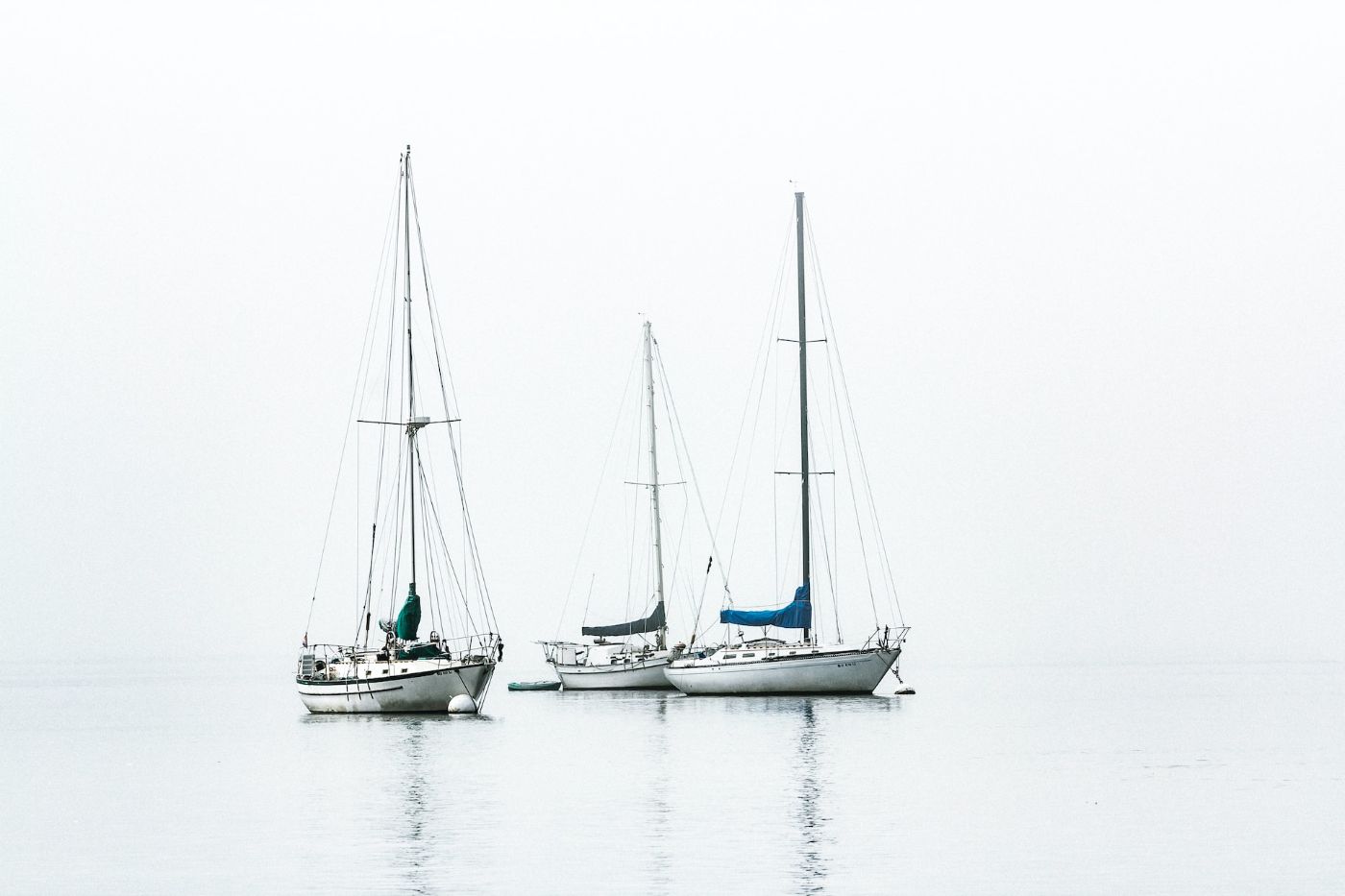
11. Southern Cross 31 is a sturdy and comfortable cruiser
History and design of the southern cross 31.
The Southern Cross 31 is a popular cruising sailboat designed by Thomas Gillmer and built by the C.E. Ryder Corporation in Bristol, Rhode Island in 1975.
The design of the Southern Cross 31 was based on the traditional double-ended cruising boats that were popular in the early 20th century. The boat has a full keel and a moderate displacement, and the hull is constructed of solid fiberglass, which is known for its durability and resistance to osmotic blistering .
Sailing performance of the Southern Cross 31
Southern Cross 31 has a moderate sail plan that is easily handled by a small crew, and it is known for its ability to sail well in a variety of wind and sea conditions. The boat also has a well-balanced helm and a comfortable cockpit that makes it easy to handle in rough weather.
Features and amenities of the Southern Cross 31
The interior of Southern Cross 31 is spacious and well-lit, with plenty of headroom and ample storage space. The boat has a large galley with a propane stove and oven, a refrigerator, and a sink with hot and cold running water. There is also a comfortable salon with a dinette table that can be converted into a double berth.
Other features include a private aft cabin with a double berth, a head with a marine toilet and a shower, and a variety of storage lockers and compartments throughout the boat. The boat also has a variety of safety features, including a sturdy stainless steel bow pulpit, a stern rail, and a lifeline system that runs the length of the deck.
12. Flicka 20 is a small but mighty bluewater sailboat
History and design of flicka 20.
The Flicka 20 is a small but mighty bluewater sailboat that has been around for over 40 years. It was designed by Bruce Bingham in the early 1970s and was initially built by Pacific Seacraft.
The Flicka 20 has a full keel design with a displacement of around 4,000 pounds. Its hull is made of fiberglass, and it has a length of 20 feet and a beam of 8 feet. The boat's design is based on the traditional lines of classic sailing vessels, which gives it a timeless look that has aged well over the years.
Sailing performance of Flicka 20
Flicka 20 has a full keel design that provides excellent stability, and it is known for its ability to maintain a straight course even in choppy waters . The boat is also easy to handle, even for novice sailors, and it can be sailed single-handedly.
Features and amenities of Flicka 20
The Flicka 20 is equipped with a cozy cabin with a V-berth and a settee that can be converted into a berth. The boat also has a small galley with a sink and a two-burner stove, as well as a marine head. There is ample storage space throughout the cabin, including lockers and shelves.
Other features of the Flicka 20 include a self-tacking jib, a mainsail with reefing points, and a boom vang. The boat also has a cockpit that is well-protected from the elements and provides excellent visibility. The cockpit is equipped with a tiller steering system, which gives the boat a responsive and agile feel.
13. The Nor'sea 27 is a compact and seaworthy vessel
History and design of nor'sea 27.
The Nor'sea 27 was designed by Lyle Hess, a renowned naval architect who is known for his work on a number of iconic boats, including the Bristol Channel Cutter and the Falmouth Cutter. The Nor'sea 27 was designed to be a smaller, more affordable version of these boats, while still retaining the same level of quality and seaworthiness.
The boat is 27 feet long and has a beam of just under 8 feet. It has a full keel and a cutter rig, which makes it very stable and easy to handle in rough seas.
The boat is also designed to be easily trailerable , which makes it a popular choice for sailors who want to explore different parts of the world without having to worry about the logistics of transporting their boat.
Sailing performance of Nor'sea 27
The Nor'sea 27 is very stable and easy to handle, even in rough seas. The full keel and cutter rig makes it very forgiving, and the boat is able to maintain a steady course even in heavy winds.
The boat is also very responsive to the helm, which makes it easy to maneuver in tight spaces.
Features and amenities of Nor'sea 27
Despite its compact size, the Nor'sea 27 has a spacious cockpit that is perfect for relaxing and enjoying the scenery, with an interior that is well-appointed with a galley, a head, and a comfortable sleeping area. The boat also has ample storage space, which is important for long voyages.
Key Features To Look For In A Bluewater Sailboat

There are several key features to consider that will ensure your safety, comfort, and enjoyment while cruising on a bluewater sailboat:
Prefer the most stable size of at least 30-35 feet in length
A bluewater sailboat should be at least 30-35 feet in length to safely traverse common wavelengths in the open ocean. It should also be self-righting or extremely seaworthy like a large catamaran.
Opt for boats with a wide beam and a deep draft. Ideally, boats with full keels are also best for bluewater sailing.
If you're looking for the best size sailboat for coastal cruising, here's how you should know the perfect size that fits your needs.
Choose one with a protected helm and accommodation
A protected and enclosed helm helps ensure safety and comfort when sailing in inclement weather. Accommodations below should also be well-protected from the elements and provide ample storage for provisions and gear.
Pick one with sturdy and reliable rigging and sails
Try to look for a boat with a cutter or ketch rig for versatility in different wind conditions. A roller furling system for the headsail is also recommended for ease of use.
Look for one with reliable anchoring and mooring
Perhaps consider a boat with a windlass and a minimum of 45 fathoms of ⅜in chain, plus a modern anchor weighing in at a minimum of 55lb.
Opt for the most self-sufficient bluewater sailboat
Consider going for a boat with ample tankage for fuel and water, as well as a reliable means of generating power such as solar panels or a wind turbine. A watermaker is also a valuable addition for long-term cruising.
It must be seaworthy and reliable
Go for boats that are built to withstand the rigors of bluewater sailing . A strong and durable hull, high-quality materials, and a well-designed layout are all indicators of a seaworthy vessel.
Leave a comment
You may also like, what is bluewater sailing.
It's easy to confuse offshore sailing with bluewater sailing - and it's no wonder. Many people do, including myself. So I've decided to list the difference once and …

What's the Best Keel Design for Bluewater Sailing?

Different Types of Sailing and Racing Explained

41 Sailboat Cruising Essentials for Long Trips
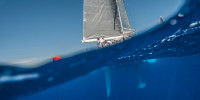
Sailboat Keel Types: Illustrated Guide (Bilge, Fin, Full)
- Articles and Guides
Best Blue Water Sailboats Under 40 Feet
19th jan 2023 by samantha wilson.

What is a blue water sailboat?
What to look for when choosing a cruising sailboat under 40 feet, what are the advantages of small blue water sailboats, what are the disadvantages of small sailboats.
- Best blue water sailboat models under 40 Feet
The term blue water sailboat doesn’t refer to a specific style of boat in the same way that a ketch or schooner does. In fact, a blue water sailboat could be either of those and many more. But when we talk about blue water sailboats, they have shared characteristics that make them suitable for, you guessed it, blue water sailing. Making long, open sea voyages such as crossing the oceans requires a boat that is solidly-built and can tackle heavy seas and inclement weather conditions. Blue water sailboats are able to be self-sufficient and lived on for extended periods of time, and to offer safety and comfort.
In a previous guide we looked at the different types of sailboats , focusing on identifying them by their hull type, rigging and uses. In general, smaller blue water sailboats under 40 feet tend to be cutters , sloops or ketches . Catamarans and trimarans too are becoming increasingly popular as long cruising vessels, although these tend to be larger than 40 feet. In fact, while there are manufacturers producing some excellent, sturdy and compact blue water sailboats under 40 feet, they tend to be a minority and most ‘small’ sailboats designed for long-range cruising are usually above 50 feet.

So what other characteristics should you be looking for in a small ocean sailboat?
Construction:
The material of the hull is probably the most crucial aspect, as it needs to be solidly built and able to withstand harsh seas as well as any collisions with floating objects. Hulls made from steel, strong fiberglass or carbon fiber tend to be the most popular. With a brand new sailboat you can be assured of a sound hull, however when buying a used sailboat under 40 feet the most important aspect is to ensure that the hull is strong and durable.
The type of keel also makes a big difference, as deep V hulls with an encapsulated keel will make your boat less likely to capsize or lose its keel. Keel sailboats under 40 feet with skeg-hung rudders are considered the best small sailboats for open ocean cruising. While in the past it tended to only be monohull boats which were used for blue water sailing, there are now several manufacturers offering catamarans and trimarans which are strong enough to cross oceans.
While the rig itself doesn’t necessarily denote whether a sailboat is more blue water worthy, it needs to be able to be manned by the number of crew on board as well as less crew if anyone is injured. The most important aspect is to think of the manageability of the rig.
Ocean-going sailboats tend to have small cockpits to keep water out. While traditionally they used to have an aft cockpit there are more center cockpit blue water sailboats around these days. They need to have good drainage as well as offering the helmsman easy reach of the headsail, staysail and mainsail sheets.
Self-steering:
Whether you’re sailing solo or with a small crew, having the ability to set an auto-pilot is an important characteristic of a blue water boat. From tiredness to accidents or illness, there might come a time when you need to set the autopilot when under power or windvane when under sail.
A compact cabin, galley and head with plenty of handholds and safe storage are vital to spending long stretches of time at sea. There needs to be enough space to ensure you are able to be self-sufficient for long periods of time. This includes everything from provisions to safety equipment , power systems, water makers, fuel storage and two anchors.
Ability to heave-to:
The act of heaving-to involves pointing the bow into the wind and fixing the helm and sail positions. This essentially stops the boat in the water and is a hugely important maneuver during storms to prevent capsizing and allows the crew to take shelter inside. Some sailboats are more able to perform this than others.
Having a way to communicate an emergency is vital, and your blue water sailboat should have a satellite phone and radio installed. A radio will allow you to connect with passing vessels, while the satellite phone is your only means of true contact with land. On deck, safety is paramount, and additions such as granny bars by the mast, safety rails and of course a harness mean you’ll be staying on board in lively conditions.
Ability to Store or Make Water:
Water water everywhere and not a drop to drink is not a phrase any sailor wants to utter. So it’s imperative that your sailboat has enough storage capacity for long voyages, as well as the ability to make fresh water for drinking and washing in. Consider that two people on a three week voyage will require around 50 gallons of fresh water (allowing for a 20% contingency). Space – and weight considerations - is always a premium on small sailboats, so you need to make sure there are enough water tanks. You’ll also want a water maker which are powered by motors and generators. AC water makers can produce around 20 gallons a day, while DC water makers which use a lot less power, produce around 12 gallons of water a day.
Good Navigation Systems:
Ok, we’re going to say how important navigation systems are on your boat, and that’s true, but in fact you don’t want to reply on electronic navigation systems alone if you’re out in the middle of the deep blue. Having paper charts on board (in digital format preferably to save on space in a small boat) and knowing how to navigate using them is imperative.

There are thousands of models of liveaboard sailboats under 40 feet on the market, but certainly not all of them are suitable for crossing oceans. We’ve seen the general characteristics of what to look for when choosing a blue water sailboat, but what are the pros and cons of a smaller boat versus a larger model?
Affordability:
Smaller tends to mean cheaper and so affordability is a major factor when buying a blue water sailboat . Whether you’re in the market for a new or used blue water sailboat under 40 feet, there are some excellent deals to be found. It means that long-held dream of sailing across the world can happen now, rather than saving for years. The other bonus is that smaller, simpler pocket cruisers will be cheaper and easier to maintain.
Easier to Sail:
The simpler the rig and the less systems on board the easier the boat will be to sail (and to care for). You’ll need a smaller crew meaning cruising boats under 40 feet tend to be popular with couples and solo sailors.
Less Spacious:
It goes without saying that smaller boats have less space. While manufacturers are finding ever-more ingenious ways to equip small sailboats with everything their larger counterparts have – and there are some clever ways you can maximize storage space in a boat – realistically space will be at a premium, meaning the number of crew and the amount of comforts you can have on board will need to be minimal.
They Tend to be Slower:
As a general rule, the smaller the sailboat, the slower it will be. While this isn’t always a bad thing if you’re in no hurry to get anywhere, it’s worth considering that out-running bad weather can be trickier in a small boat.
Less comfortable:
A smaller boat can make for a less comfortable ride, especially in bigger seas.
Best blue water sailboat models under 40 Feet
If you’re in the market for a cruising sailboat under 40 feet the options can seem dizzying. With so many to choose from it’s hard to know where to start. There are thousands of excellent used boats on the market, with reputations for reliability, safety, comfort and build. Here however we’re going to take a look at some of the manufacturers making the best bluewater sailboats in 2023 . With a solid reputation and excellent craftsmanship, they make a good place to start your search.
Beneteau’s Oceanis 40, Oceanis 38.1 and Oceanis 34.1.
Beneteau’s reputation shines through in this smaller range of ocean-going yachts. At the top end of the under-40 foot range is the Oceanis 40 , with a hull designed by Marc Lombard and a huge amount of deck and interior space for its size. The Oceanis 38.1 offers surprising comfort and speed, with the ability to be sailed with a small crew, while the smallest in the range is the Oceanis 34.1 pocket cruiser, with cleverly designed spaces and a modern hull design.

Photo credit: Beneteau
Jeanneau’s Sun Odyssey 349 and Sun Odyssey 380:
For over 60 years Jeanneau has been crafting motor and sailboats which push the boundaries and the Sun Odyssey range is the perfect example of that. The Sun Odyssey 349 and Sun Odyssey 380 are the smallest in the range, offering high performance sailing you would expect of a much larger model. With an iconic inverted bow, huge interior spaces and fine-tuned handling, they are popular models for long distance cruising.

Photo credit: Jeanneau
Hallberg-Rassy 340, 372, 40 and 40C:
The range of Swedish-built Hallberg-Rassy small blue water yachts is one of the most impressive of any manufacturer. Boasting four yachts under 40 feet, they put their nine decades of expertise into both center cockpit and aft cockpit ocean-going cruisers and have the awards to show for it. From the Hallberg-Rassy 340 , which manages to pack everything you could need in a long-range cruiser into an ultra-compact package, to the award-winning 372 which manages to be even faster than the already fast Hallberg-Rassy 40 . They offer incredible handling, expansive oak interiors, generous cockpits and modern rigs.

Photo credit: Hallberg-Rassy
SeaWind Catamarans’ 1160, 1190 and 1260:
It’s uncommon to find blue water catamarans under 40 feet, but SeaWind has crafted no less than three compact, sturdy cats that can cross oceans in safety and comfort. With huge interior spaces across its double beam, you get much more living space than you would in a monohull of the same size, as well as robust seaworthiness, great sailability and all at an attractive price.

Photo credit: SeaWind
Written By: Samantha Wilson
Samantha Wilson has spent her entire life on and around boats, from tiny sailing dinghies all the way up to superyachts. She writes for many boating and yachting publications, top charter agencies, and some of the largest travel businesses in the industry, combining her knowledge and passion of boating, travel and writing to create topical, useful and engaging content.

More from: Samantha Wilson
Related Articles and Guides
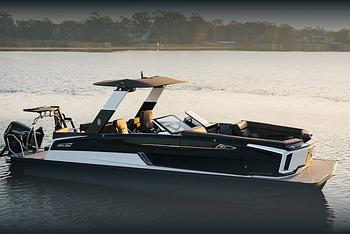
16th Aug 2024
Best Luxury Pontoon Boat Brands Have it All: Glamor, Speed, Fishing, Waterslides...
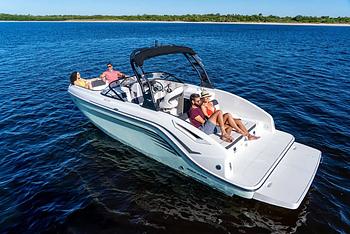
10th Aug 2024
Deck Boat vs. Bowrider: Which Runabout is Best?

19th Jul 2024
The World’s Best Yacht Brands
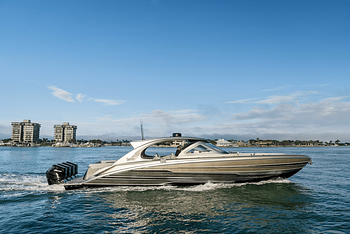
12th Jul 2024
Top Performance-Boat Brands, Where There’s Something For Everyone

- Explore Rightboat
- Boats for Sale
- Boating Articles
- Buyers Guide
- About RightBoat
- Sell Your Boat
- Boat Selling Advice
- All manufacturers
- All categories
Enter your email to keep up to date with the latest news
Join for free
Sign up now for free and discover how easy it is to keep up to date with THE latest boats for sale. Find your right boat, and tailor your voyage to finding your next boat.
Benefits of becoming a member:
- Set up tailored alerts
- Personalise your experience
- Download full specifications and broker details
- Keep tabs on your favourite boats
Are you a broker? Join as a Broker
Rightboat - join for free.
Do you have an account already? Login
Save this search
Save your search and receive new boats in your email..
You can unsubscribe from your alerts whenever you like. By pressing the button you accept the Legal Terms and conditions

My Cruiser Life Magazine
Best Bluewater Cruising Sailboats: Top Picks & Reviews
A bluewater sailboat is designed from the keel up to cross oceans. Of the many thousands of sailboats manufactured every year worldwide, only a few meet this definition.
Before diving into the best examples, let’s take a moment to think about what really counts as a bluewater sailboat and what criteria you might use to evaluate different designs.
Table of Contents
What does bluewater sailboat mean, hull shape and design, strong construction, carries sufficient power, water, fuel, and food, comfort ratio and ride quality, flexible sailplan for all types of weather, handholds and safe decks, pacific seacraft/crealock 37/40/44, baba/tashiba/panda 40, valiant 40/42/47/50, norseman 447, passport 40, hallberg-rassy 42/44, amel super maramu, cabo rico 38/42, final thoughts.
When searching for boats online, the term “bluewater” gets batted around quite a bit. “Bluewater” refers to that mythical color that the ocean takes on when you are far offshore. The sunlight illuminates only the first hundred feet or so, and the endless abyss beneath gives that color an other-worldly quality.
The implication is that a “bluewater sailboat” is capable of seeing those blue waters. It’s capable of venturing offshore, and it’s capable of the self-sufficiency required to survive out there.
But there are still many questions to be answered. For every sort of bluewater expedition that you could dream up, you can find a type of sailboat that was built to do it.
A better and more descriptive term for the type of boat is a passage-making sailboat. This is a sailboat built to cross oceans. Most people want to do this in a sailboat between 40 and 65 feet long, all in all. Larger yachts are, more or less by definition, bluewater boats.
The distinction lies in the company that these mid-sized ocean-going vessels keep. There have been many thousands of sailboats ranging from 40 to 65 feet sold all over the world. But a vast majority of these designs were not built with ocean voyaging as their primary purpose.
Instead, many can be described as coastal cruisers—built for protected waters or maybe even carefully planned hops across sections of big water. Others were designed as charter boats that can provide luxurious accommodations for a week-long island vacation.
By and large, other priorities shine through that detract from their sea-kindliness and passage-making abilities on these boats. Manufacturers may choose to use hull shapes that provide bountiful interior and living space, making the ride rougher in rough seas.
They may choose a fin keel and spade rudder for better upwind performance and more overall speed, knowing that these designs are less sturdy and more prone to damage than a full-keel bluewater cruiser. They may include large windows, which add lovely light to the living space but also pose a danger should they be breached offshore in storm conditions.
Many boats like this have completed long passages or even circumnavigated successfully. To say that it wasn’t designed for the journey isn’t to say that it isn’t possible to make the journey. But they still should not be considered “bluewater sailboats” because they have done it and gotten lucky—or have done it carefully and been heavily modified to do it safely.
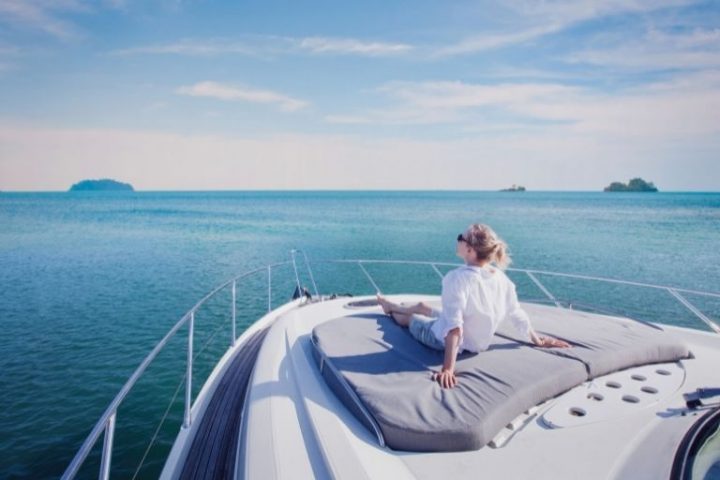
Criteria for Picking Your Bluewater Boat
Everyone has a different vision for what they want from a bluewater sailboat. The term carries a lot of baggage. There are traditional heavily-built cruisers that can weather anything. And then, there are the well-equipped and upgraded production boats that can get the job done.
For our article, we will look at the first option—boats designed and built with voyaging across oceans in mind. Unfortunately, the list isn’t long and is full of older boat designs. This is mainly because this type of boat has fallen out of style, replaced by production boats that emphasize living accommodations and crew comfort while in port.
In the end, the bluewater boat you pick shows your priorities. Of course, no boat is perfect, and every sailor makes some sacrifices. Here are a few of the things that seasoned bluewater sailors will be looking for in an offshore-bound vessel.
The hull design of a boat affects many things about its performance, but most critically, it affects its ride and comfort at sea. This is especially true going upwind. Modern production boats are almost uniformly flat bottomed, which can pound dreadfully in a heavy seaway.
On the other hand, classic full-keel designs are renowned for their easy motions at sea. They are commonly described as slow compared to modern designs. But truthfully, all sailboats are slow. Would you rather have a comfortable boat that cruises at 7 knots or lose your teeth while doing 9 knots?
Conditions offshore can deteriorate with horrifying speed. Even with the excellent weather forecast products available in the 21st century, a bluewater boat should be capable of surviving storm conditions at sea. The crew’s skill and their heavy-weather sailing strategy have an enormous impact on storm survival. A sturdy vessel built to take the beating gives the crew a solid, trustworthy platform that is less likely to have serious breakages in storm conditions.
The list of things that you could include in this category is endless. Most of these things do not exist on production boats but are considered must-haves on offshore vessels.
- All deck and sailing hardware is through-bolted with heavy backing plates
- All seacocks are mounted on proper mounting plates and flanges
- All rigging is redundant so that no one failure can cause a rig to come down
- Hull is thickly built to survive possible impacts better
- Strongly built rudder mounted to the keel or skeg for protection and strength
- Prop and prop shaft are protected from entanglement and damage
There is simply no substitute for the warm feeling a sailor has when they do not doubt that their boat can take on any challenge. Smart sailor spends more time worrying about their own abilities and skills than the quality of their vessel.
Passage-making means living aboard for an extended time at sea. That means that the vessel needs to be large enough to accommodate you and your stuff for at least one and a half times the length of your longest trip. It also means that there is space for everyone on board to live comfortably and cohabitate for that length of time.
Yes, the 20-foot-long Pacific Seacraft Flicka has completed circumnavigations, as has the 22-foot Falmouth Cutter or the Contessa 26. All are examples of extremely well-built and sturdy blue water vessels. But for most crews that consist of two or three people, they aren’t big enough to survive long passages without living exceptionally minimally.
Thus, their utility is limited to solo long-distance voyagers who are far more into the adventure of living small than cruising comfortably.
Comfort is a vastly underrated quality in today’s ideal cruising boat. A comfortable ride at sea is simply invaluable. It means a better-rested crew and better living conditions on board all voyages, long and small, calm and rough.
Many websites talk about a yacht’s “comfort ratio”. This is of little interest to the racer or the coastal cruiser. But it measures how nice a boat rides offshore. The best boat designs score 30 or better. Long and heavy bluewater cruisers may score better than 50. The comfort ratio considers the loaded displacement of the vessel, its length, and beam—so larger boats have the advantage.
The comfort ratio does not apply to catamarans , however. The ride comfort on multihulls is much more difficult to judge. While the motion of a heavy monohull in a seaway can be rhythmic and predictable, wave action is felt on two independent hulls and the bridge deck of a cruising catamaran . The result is a jerky and unpredictable motion.
Some crews much prefer this motion to the extra rolling that a monohull experiences. The differences are subjective and cannot easily be quantified. Some people never get seasick on monohulls and are miserable on sailing catamarans , and the opposite is true just as often.
Besides the ride motion, it’s worth noting that multihulls have no ballast at all. Instead, they are lightly built for the best speed and performance, translating into a bouncy and pounding ride over even the slightest chop.
A bluewater sailor will want to make a way in nearly every set of conditions imaginable, short of a survival-condition storm. To do this, their sail inventory should provide them with an option they desire. From light winds to gales and heavy seas, the boat should have options.
Far and wide, the Bermudian sloop rig has taken over as the sailplane of choice on the typical coastal bluewater cruiser. Traditional bluewater sailboats tend to be either cutters or cutter-rigged ketches. These setups provide more options and easier sail handling than sloops do.
Another significant consideration when working offshore is how easy it is to get around the boat when the world is moving every which way. Down below, everything should have round corners and soft edges—you never know where your next painful bruise will come from. Up on deck, tall gunwales and secure lifelines are the difference between a death-defying adventure or a routine walk to the bow.
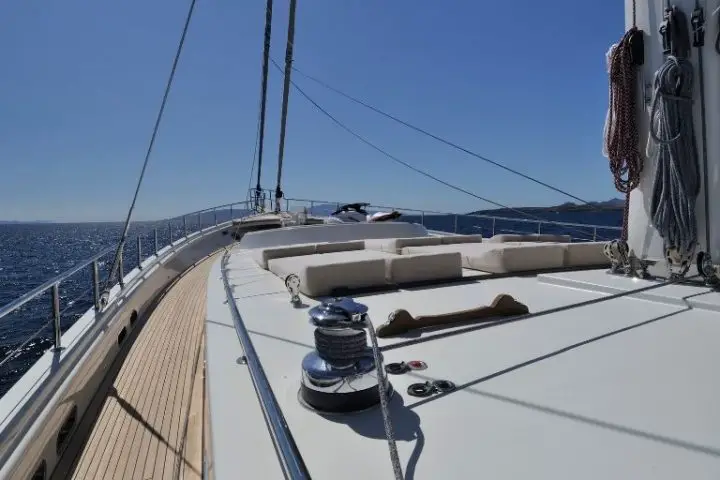
10 Best Offshore Bluewater Sailboats
Here are just a few of the biggest names in bluewater sailboats. Some of these vessels have been out of production for decades, but they still make a name for themselves with those who appreciate this type of vessel.
As noted above, we’re sticking with the classic definition of “bluewater sailboat” here. Of course, many will argue that modern production sailboats and multihulls can and do cross oceans. They certainly can and do. But very few of them in this size range are purpose-built from the start to provide comfortable and safe rides at sea—and so they are omitted here.
Fiberglass boats of this style began with the Westsail 32. This was one of the cruising sailboats that created a cultural movement. Today, these boats are not particularly memorable. They were first built in 1971 and were the first of an entirely new class of sailboats—the attainable, fiberglass-built, bluewater-capable cruiser.
While there are still Westsails out there, many better designs have popped up since. But it was the Westsail that got many dreamers dreaming of sailing off into the sunset, and it was the success of the Westsail that convinced many companies to try their hand at building beefy offshore boats.
One of the first successful competitors to the Westsail was the Tayana 37. Designed by Bob Perry and built-in Taiwan, the Tayana 37 was one of the most popular bluewater sailboats of the 1970s. Over 500 were built, and they are prized to this day for their seakeeping abilities and sturdy construction. Their canoe stern design makes them especially easy to handle in quartering seas. The Tayana is a full-keeled cutter, heavily constructed and sturdily built.
William “Bill” Crealock is known for putting a premium on designs that ride comfortably. Pacific Seacraft produced the most popular of his designs. In fact, nearly every one of the company’s sailboats came from his drawing board. Pacific Seacrafts are extremely well-built boats that anyone would feel comfortable in.
These boats feature a long keel and a sturdy skeg-mounted rudder. Their performance is theoretically slightly better than full-keeled boats, but they’re still comfortable in a seaway.
Similar to the Tayana 37, this series of boats were also designed by Bob Perry and built by Taiwanese boatyards. They feature a slightly modernized cutaway full keel. They’re best known for their lovely interiors that showcase some of the best Taiwanese craftsmanship you’ll find.
These boats came in a wide variety of designs and sizes, but all are roughly similar. The Baba 30 is the smallest, while the 37 and 40-footers are better equipped for extended passage making.
Bob Perry updated his double-ender design for Texas-based Valiant Yacht. These are premium American-built yachts that are highly sought after to this day. The Valiant 40 incorporated a long fin keel and skeg-mounted rudder. The goal was to improve performance, especially when sailing upwind while keeping a structurally sound and sturdy design.
The results spoke for themselves, and the design has pretty much been adopted by every other design of offshore sailing yacht since.
Another modern design from the desk of Bob Perry, the Norseman 447, was built by Ta Shing in Taiwan, one of the premier boatyards in the world. Its underside is similar in design to the Valiants, with a long keel and skeg-mounted rudder. It’s heavily built and features just enough room and waterline for comfortable long passages.
Like the Norseman, the Passport is a ruggedly built offshore sailing yacht with a modern design. Also designed by Bob Perry and also built in Taiwan, the Passport was first launched in 1980. The line of boats eventually expanded to include yachts from 37 to 52 feet.
The Passport features a fin keel and skeg-hung rudder. It’s a sloop and was designed to be sailed under main alone for easy single-handing. The boats are incredibly well-built and sturdy. Sailor John Kretchmer wrote an excellent review for Sailing Magazine. https://sailingmagazine.net/article-537-passport-40.html The Passport offers the beautiful lines and sea kindly design of a Bob Perry boat, but with the modern finish and appeal of a newer boat.
The Hylas line of Taiwanese-built boats is a popular one. Unlike many others on the list, these yachts featured aft cabins and center cockpit designs. This provides a more central location to drive the yacht from. Down below, the arrangement allows for a large master stateroom aft with an island berth.
Hallberg-Rassy builds seaworthy and sturdy vessels in Sweden. Most of their designs, and all of their current offerings, come from the drawing boards of renowned European designer German Frers. The best-known models are center cockpit designs with excellent construction and beautiful joinery down below. The newer boats have modern undersides with fin keels and beefy, skeg-mounted rudders. Older boats have long or full keel designs.
This once little-known French manufacturer of beefy offshore ketches has experienced a renaissance thanks to the YouTube sailors on SV Delos. Amels are larger yachts, ranging from 50 to 60 feet long. They’re heavily built but feature a modernized ketch rig that makes sail handling easy. Much of the line handling is done by power winches, including furlers on all sails. Their newest designs are sleeker cutters and sloops.
Cabo Ricos are hand-built in Costa Rica by an American company, or they were until about 2010. The early 34s and 38s were designed by Bill Crealock, while Chuck Paine designed the larger yachts like the 42 and 56. They are one of the newest-built full-keeled cruisers you can find.
They’re known for their fantastic woodwork and joinery down below, but the lines of these lovely boats only hint at how comfortable they ride at sea. Their solid fiberglass hulls are extraordinarily well-built and ready for anything. They have cutter rigs and heavy displacements. In short, they were designed from the keel up for bluewater passage making.
There are very few companies that are still making pure-blood bluewater cruising boats. While the market for production and charter sailboats is enormous, the number of private owners who want to cross oceans is small. Most of the owners will prefer to find a boat on the used market anyway. That means fewer sales and a high retail price, making the endeavor’s profitability for the manufacturer difficult.
But there are plenty of used yachts out there, and many are ready to go cruising tomorrow. Some of the yachts on this list are so well built and sturdy that they will keep crossing oceans for decades to come.
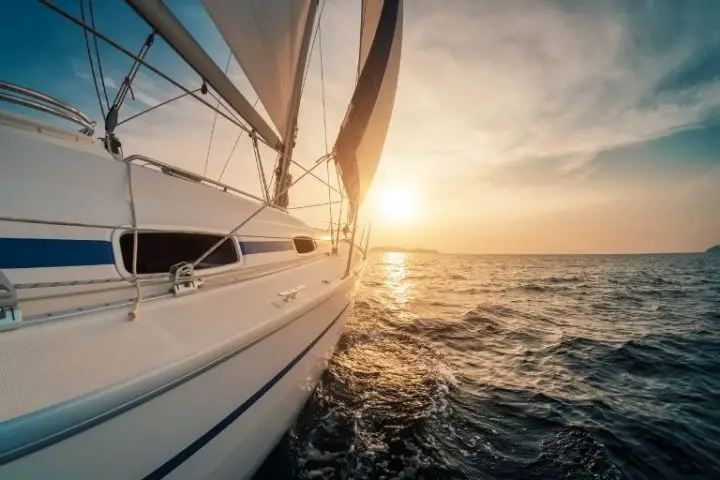
Matt has been boating around Florida for over 25 years in everything from small powerboats to large cruising catamarans. He currently lives aboard a 38-foot Cabo Rico sailboat with his wife Lucy and adventure dog Chelsea. Together, they cruise between winters in The Bahamas and summers in the Chesapeake Bay.
Leave a comment
Your email address will not be published. Required fields are marked *
Save my name, email, and website in this browser for the next time I comment.

7 Bluewater Cruising Sailboats We Love

Our editorial staff selected 7 bluewater cruising sailboats from 26 to 42 feet, from all over the world. Bluewater sailing is a type of ocean cruising: it refers to long-term open sea cruising, for example, passages (ocean crossings). Bluewater sailing implies a lack of support and requires a certain amount of self-sufficiency, since you’re away from land for long periods of time. An example is crossing the Atlantic. But you can’t just stock up any boat and go at it: not all boats can handle ‘blue water’. You need a different boat type and also some add-ons. Which is your preferred among these bluewater cruising sailboats?

Designed by Bill Lapworth and built by Jensen Marine, the Cal 40 was nothing less than revolutionary, and displaced a mere 15,000 pounds, unheard of when first launched in 1964.
Contessa 26

This cruiser was designed by David Sadler, built by J.J. Taylor & Sons of Toronto, Canada and a few other builders, and made forever famous by then 18-year-old Tania Aebi, who completed her solo circumnavigation aboard Varuna at the age of 21.
Dufour Arpège 30

The Arpege 30 was introduced in 1966 and had a fairly long production run of approximately 1,500 boats. The Dufour Arpege hull is solid fiberglass and the deck may or may not have been cored.
Hinckley Bermuda 40

This Bill Tripp -designed sailboat, produced in Maine by one of America’s greatest Builders, might just define elegance afloat. Production began in 1959 and continued into the 1990s with a few changes.

Island Packet 420

Island Packet builds distinctive, full-keel bluewater sailboats that have almost a cult following. They’re solid glass, heavy cruisers that won’t set any speed records but will get you there in safety and comfort. Designed by Bob Johnson, it is not offered as a new build anymore.
Tartan 3700

On-deck, the 3700 features details that deliver excellent aesthetics, comfort and security. Wide side decks provide safe and secure fore and aft movement, while abundant ventilation offerings include all-opening stainless steel house side portlights, cockpit portlights, stainless steel deck hatches and 2 stainless steel dorade ventilators with stainless guards.
Westsail 32

The Westsail 32 was a production fiberglass sailboat built between the years of 1971 and 1980. Approximately 830 were built, about half of them in kit form. The “W32”, as they are often referred to, was very heavily built and has taken many people on trouble-free voyages and several circumnavigations.
Nautor Swan Merges With Sanlorenzo Group
Royal huisman project 410, ready to roll the hull, the first wallywind110 to debut at the monaco yacht show 2024, mishi 102 superyacht project will be unveiled at monaco yacht show 2024, live your passion, subscribe to our mailing list.
Hans Christian 41
Hinkley 40…wow!

Home » Blog » Buy a boat » 5 best small sailboats for sailing around the world
5 best small sailboats for sailing around the world
By Author Fiona McGlynn
Posted on Last updated: April 19, 2023

A small sailboat can take you big places
Small sailboats are the ticket to going cruising NOW — not when you retire, save up enough money, or find the “perfect” bluewater cruising boat. In fact, it’s the first principle in Lin and Larry Pardey’s cruising philosophy: “Go small, go simple, go now.”
Small yachts can be affordable, simple, and seaworthy . However, you won’t see many of them in today’s cruising grounds. In three years and 13,000 nautical miles of bluewater cruising, I could count the number of under 30-foot sailboats I’ve seen on one hand (all of them were skippered by people in their 20s and 30s).
Today’s anchorages are full of 40, 50, and 60-foot-plus ocean sailboats, but that’s not to say you can’t sail the world in a small sailboat. Just look at Alessandro di Benedetto who in 2010 broke the record for the smallest boat to sail around the world non-stop in his 21-foot Mini 6.5 .
So long as you don’t mind forgoing a few comforts, you can sail around the world on a small budget .

What makes a good blue water sailboat
While you might not think a small sailboat is up to the task of going long distances, some of the best bluewater sailboats are under 40 feet.
However, if you’re thinking about buying a boat for offshore cruising, there are a few things to know about what makes a small boat offshore capable .
Smaller equals slower
Don’t expect to be sailing at high speeds in a pocket cruiser. Smaller displacement monohulls are always going to be slower than larger displacement monohulls (see the video below to learn why smaller boats are slower). Therefore a smaller cruiser is going to take longer on a given passage, making them more vulnerable to changes in weather.
A few feet can make a big difference over a week-long passage. On the last leg of our Pacific Ocean crossing, our 35-foot sailboat narrowly avoid a storm that our buddy boat, a 28-foot sailboat, couldn’t. Our friend was only a knot slower but it meant he had to heave to for a miserable three days.

Small but sturdy
If a pocket cruiser encounters bad weather, they will be less able to outrun or avoid it. For this reason, many of the blue water sailboats in this list are heavily built and designed to take a beating.
Yacht design has changed dramatically over the last 50 years. Today, new boats are designed to be light and fast. The small sailboats in our list are 30-plus year-old designs and were built in a time when weather forecasts were less accurate and harder to come by.
Back in the day, boat were constructed with thicker fiberglass hulls than you see in modern builds. Rigs, keels, rudders, hulls and decks – everything about these small cruising sailboats was designed to stand up to strong winds and big waves. Some of the boats in this post have skeg-hung rudders and most of them are full keel boats.
The pros and cons of pocket cruiser sailboats
Pocket cruiser sailboats present certain advantages and disadvantages.
More affordable
Their smaller size makes them affordable bluewater sailboats. You can often find great deals on pocket cruisers and sometimes you can even get them for free.
You’ll also save money on retrofits and repairs because small cruising sailboats need smaller boat parts (which cost a lot less) . For example, you can get away with smaller sails, ground tackle, winches, and lighter lines than on a bigger boat.
Moorage, haul-outs, and marine services are often billed by foot of boat length . A small sailboat makes traveling the world , far more affordable!
When something major breaks (like an engine) it will be less costly to repair or replace than it would be on a bigger boat.

Less time consuming
Smaller boats tend to have simpler systems which means you’ll spend less time fixing and paying to maintain those systems. For example, most small yachts don’t have showers, watermakers , hot water, and electric anchor windlasses.
On the flip side, you’ll spend more time collecting water (the low-tech way) . On a small sailboat, this means bucket baths, catching fresh water in your sails, and hand-bombing your anchor. Though less convenient, this simplicity can save you years of preparation and saving to go sailing.
Oh, and did I mention that you’ll become a complete water meiser? Conserving water aboard becomes pretty important when you have to blue-jug every drop of it from town back to your boat.
Easier to sail
Lastly, smaller boats can be physically easier to sail , just think of the difference between raising a sail on a 25-foot boat versus a 50-foot boat! You can more easily single-hand or short-hand a small sailboat. For that reason, some of the best solo blue water sailboats are quite petite.
As mentioned above small boats are slow boats and will arrive in port, sometimes days (and even weeks) behind their faster counterparts on long offshore crossings.
Consider this scenario: two boats crossed the Atlantic on a 4,000 nautical mile route. The small boat averaged four miles an hour, while the big boat averaged seven miles an hour. If both started at the same time, the small boat will have completed the crossing two weeks after the larger sailboat!
Less spacious
Living on a boat can be challenging — living on a small sailboat, even more so! Small cruising boats don’t provide much in the way of living space and creature comforts.
Not only will you have to downsize when you move onto a boat you’ll also have to get pretty creative when it comes to boat storage.
It also makes it more difficult to accommodate crew for long periods which means there are fewer people to share work and night shifts.
If you plan on sailing with your dog , it might put a small boat right out of the question (depending on the size of your four-legged crew member).

Less comfortable
It’s not just the living situation that is less comfortable, the sailing can be pretty uncomfortable too! Pocket cruisers tend to be a far less comfortable ride than larger boats as they are more easily tossed about in big ocean swell.
Here are our 5 favorite small blue water sailboats for sailing around the world
When we sailed across the Pacific these were some of the best small sailboats that we saw. Their owners loved them and we hope you will too!
The boats in this list are under 30 feet. If you’re looking for something slightly larger, you might want to check out our post on the best bluewater sailboats under 40 feet .
Note: Price ranges are based on SailboatListings.com and YachtWorld.com listings for Aug. 2018
Albin Vega 27($7-22K USD)

The Albin Vega has earned a reputation as a bluewater cruiser through adventurous sailors like Matt Rutherford, who in 2012 completed a 309-day solo nonstop circumnavigation of the Americas via Cape Horn and the Northwest Passage (see his story in the documentary Red Dot on the Ocean ).
- Hull Type: Long fin keel
- Hull Material: GRP (fibreglass)
- Length Overall:27′ 1″ / 8.25m
- Waterline Length:23′ 0″ / 7.01m
- Beam:8′ 1″ / 2.46m
- Draft:3′ 8″ / 1.12m
- Rig Type: Masthead sloop rig
- Displacement:5,070lb / 2,300kg
- Designer:Per Brohall
- Builder:Albin Marine AB (Swed.)
- Year First Built:1965
- Year Last Built:1979
- Number Built:3,450
Cape Dory 28 ($10-32K USD)

This small cruising sailboat is cute and classic as she is rugged and roomy. With at least one known circumnavigation and plenty of shorter bluewater voyages, the Cape Dory 28 has proven herself offshore capable.
- Hull Type: Full Keel
- Length Overall:28′ 09″ / 8.56m
- Waterline Length:22′ 50″ / 6.86m
- Beam:8’ 11” / 2.72m
- Draft:4’ 3” / 1.32m
- Rig Type:Masthead Sloop
- Displacement:9,300lb / 4,218kg
- Sail Area/Displacement Ratio:52
- Displacement/Length Ratio:49
- Designer: Carl Alberg
- Builder: Cape Dory Yachts (USA)
- Year First Built:1974
- Year Last Built:1988
- Number Built: 388
Dufour 29 ($7-23K)

As small bluewater sailboats go, the Dufour 29 is a lot of boat for your buck. We know of at least one that sailed across the Pacific last year. Designed as a cruiser racer she’s both fun to sail and adventure-ready. Like many Dufour sailboats from this era, she comes equipped with fiberglass molded wine bottle holders. Leave it to the French to think of everything!
- Hull Type: Fin with skeg-hung rudder
- Length Overall:29′ 4″ / 8.94m
- Waterline Length:25′ 1″ / 7.64m
- Beam:9′ 8″ / 2.95m
- Draft:5′ 3″ / 1.60m
- Displacement:7,250lb / 3,289kg
- Designer:Michael Dufour
- Builder:Dufour (France)
- Year First Built:1975
- Year Last Built:1984
Vancouver 28 ($15-34K)

A sensible small boat with a “go-anywhere” attitude, this pocket cruiser was designed with ocean sailors in mind. One of the best cruising sailboats under 40 feet, the Vancouver 28 is great sailing in a small package.
- Hull Type:Full keel with transom hung rudder
- Length Overall: 28′ 0″ / 8.53m
- Waterline Length:22’ 11” / 6.99m
- Beam:8’ 8” / 2.64m
- Draft:4’ 4” / 1.32m
- Rig Type: Cutter rig
- Displacement:8,960lb / 4,064 kg
- Designer: Robert B Harris
- Builder: Pheon Yachts Ltd. /Northshore Yachts Ltd.
- Year First Built:1986
- Last Year Built: 2007
- Number Built: 67
Westsail 28 ($30-35K)

Described in the 1975 marketing as “a hearty little cruiser”, the Westsail 28 was designed for those who were ready to embrace the cruising life. Perfect for a solo sailor or a cozy cruising couple!
- Hull Type: Full keel with transom hung rudder
- Hull Material:GRP (fibreglass)
- Length Overall:28′ 3” / 8.61m
- Waterline Length:23’ 6” / 7.16m
- Beam:9’ 7” / 2.92m
- Displacement:13,500lb / 6,124kg
- Designer: Herb David
- Builder: Westsail Corp. (USA)
- Number Built:78
Feeling inspired? Check out the “go small” philosophy of this 21-year-old who set sail in a CS 27.
Fiona McGlynn is an award-winning boating writer who created Waterborne as a place to learn about living aboard and traveling the world by sailboat. She has written for boating magazines including BoatUS, SAIL, Cruising World, and Good Old Boat. She’s also a contributing editor at Good Old Boat and BoatUS Magazine. In 2017, Fiona and her husband completed a 3-year, 13,000-mile voyage from Vancouver to Mexico to Australia on their 35-foot sailboat.
Saturday 1st of September 2018
Very useful list, but incomplete - as it would necessarily be, considering the number of seaworthy smaller boats that are around.
In particular, you missed/omitted the Westerly "Centaur" and its follow-on model, the "Griffon". 26 feet LOA, bilge-keelers, weighing something over 6000 pounds, usually fitted with a diesel inboard.
OK, these are British designs, and not that common in the US, but still they do exist, they're built like tanks, and it's rumored that at least one Centaur has circumnavigated.
Friday 31st of August 2018
This is a helpful list, thank you. I don't think most people would consider a 28' boat a pocket cruiser, though!
Terms and Conditions - Privacy Policy

Best Inexpensive Bluewater Sailboats

Last Updated by
Jacob Collier
December 28, 2023
Sailing is an exhilarating experience, but it can be expensive. If you are looking for the best inexpensive bluewater sailboats, then this article will help!
The best inexpensive bluewater sailboats are the ones that are small, fast, and sturdy. If you can find one that is easy to build as well, then you will have to pay much less for it. These sailboats are also seaworthy enough to handle the open ocean without being too big or complicated.
Sailing is a great way to spend your free time. It's an activity that has been enjoyed by people for centuries, and it can be done with just about anyone of any age or physical ability. The only problem many people have is the cost associated with purchasing a boat, which can really put a damper on things if you are on a tight budget. But don't worry! We have found some of the best inexpensive bluewater sailboats, so you won't have to break your bank account in order to enjoy sailing!
There are many options available, but not all of them are worth your money. That is why we have looked at some of the top boats on the market and picked out our favorites. Whether you're an experienced sailor or just getting started, these boats will get the job done right!
Table of contents
1. Cape Dory 30
{{boat-info="/boats/cape-dory-30"}}
If you're looking for a quality, affordable bluewater sailboat, the Cape Dory 30 is definitely worth a look. This boat has been cruising the world's oceans for over 30 years and has a well-deserved reputation for being sturdy, reliable and easy to sail.
The Cape Dory 30 is a moderate displacement boat that's designed for coastal and offshore cruising. She features a full keel with a rudder, making her stable and seaworthy in rough seas. The hull is hand-laid fiberglass with balsa core construction, which makes her strong and durable. The deck is also fiberglass with molded-in non-skid surfaces for safety while sailing.
The layout of the Cape Dory 30 is simple yet functional. The cockpit is roomy, with plenty of space for lounging around but not so much that you can't work the sails if needed. The self-draining cockpit has two lockers underneath that are perfect for storing tools or other nautical gear that you need to keep dry.
This bluewater cruiser offers a moderate sail area, which makes it easy to handle even under windy conditions. Because of this, she requires some wind to get going -- in 10 knots of breeze, she can reach speeds up to 6 knots under power and 7 knots under sail. As far as storage space goes, there are lockers on both sides of the berth area plus shelves above the berth for items like books and clothing.
The Cape Dory 30 was initially outfitted with worm gear steering. This sort of gear is durable, simple to use, and does not require a cockpit steering pedestal. The wheel will also keep the rudder in place without the help of a brake. The biggest disadvantage is that there isn't much rudder feedback, making it difficult to know when the boat is properly balanced. Not to mention worm gear steering will not help you sail better.
The berthing area is good, with enough room for two people to sleep comfortably. There's also plenty of headroom at six feet. The Cape Dory 30 is a great boat for coastal cruising, ocean passages, and extended cruising. She has all the features that you need to make your journey comfortable while still being able to handle a variety of sailing conditions. The estimated price for the Cape Dory 30 ranges from $12,000 to $32,000
- Sturdy and reliable with a long history of ocean crossings
- Good performance in windy conditions
- Functional layout with plenty of storage space
- Comfortable berthing area for two people
- May require modifications for ocean passages
- Not as fast as some other bluewater sailboats
- A tad expensive for an entry-level cruiser
2. Sabre 28
{{boat-info="/boats/sabre-28"}}
The Sabre 28 is another fine bluewater cruiser in this price range. Made by Sabre Yachts, these boats have a solid reputation for being reliable, seaworthy cruisers that will last you for many years to come.
When making their 28-foot bluewater sailboat, Sabre Yachts took every aspect into consideration when designing her. They made her strong with a full keel and fiberglass hull construction but light enough to allow for better sailing abilities under power or sail. She also has plenty of storage space with lockers on both sides of the berth plus shelves above the berth to give you ample room for all your belongings while cruising.
The Sabre 28 is built with a solid fiberglass hull and deck, making her strong and durable. She has a moderate displacement of 6,000 pounds and features a full keel with encapsulated ballast. This helps her handle well in various sailing conditions while still providing good performance.
While she may not be fast compared to other bluewater sailboats in her class, the Sabre 28 makes up for it with her great handling and seaworthiness. She can handle a wide variety of sailing conditions with ease, making her the perfect boat for coastal cruising, ocean passages and even extended cruising.
The Sabre 28 comes standard with wheel steering, which gives you better control over the boat in varying conditions. There is also plenty of cockpit space for lounging around or working the sails. And because of her moderate sail area, she's easy to handle even under windy conditions.
The berthing area is good, with enough room for two people to sleep comfortably. There's also plenty of headroom at six feet. The cabin is spacious and well-ventilated, making it a great place to relax after a long day of sailing.
The Sabre 28 is also outfitted for single or double hand sailing, making her the perfect choice for couples or small families who want to explore new waterways together. She's easy to sail and forgiving, making her the perfect boat for novice sailors. The Sabre 28 will set you back anywhere from $7000 to $27000. If you're looking for a smaller cruising sailboat, the Sabre 28 should definitely be on your list!
- Solid reputation for being a reliable and seaworthy cruiser
- Handles a wide variety of sailing conditions well
- Good performance under power or sail
- Plenty of storage space for all your belongings
- Not as fast as some other bluewater sailboats in her class
- Designed primarily as a coastal cruiser so it may not perform well in open waters without modifications
- Can only accommodate two people comfortably underneath the V-berth (greater than that might be too crowded)

3. Island Packet 31
{{boat-info="/boats/island-packet-31"}}
The Island Packet 31 is another great bluewater cruiser for people looking to explore new waterways. They are known as one of the best sailboats for bluewater cruising due to their strength and durability.
If you're looking for a bluewater sailboat with stability, speed and comfort, then the Island Packet 31 might be the boat for you! She has excellent performance under power or sail, can handle harsh conditions with ease, and is comfortable enough to spend long periods aboard.
Designed by Bob Johnson (a boat builder and naval architect), this 31-foot boat was made specifically for open ocean sailing. Her hull is strong yet thin, making her fast while still being able to handle a wide variety of conditions. The Island Packet 31 is built with a solid fiberglass hull and deck, making her strong and durable. She has a moderate displacement of 11,000 pounds and features a full keel with encapsulated ballast. This helps her handle well in various sailing conditions while still providing good performance.
The Island Packet 31 is also built with a full keel, giving her plenty of stability should the weather become rough while out at sea. She was designed to handle large amounts of wind and waves without losing her composure, making her perfect for bluewater cruising!
She's also easy to sail, even under intense winds and stormy conditions. She has very good stability with a wide beam and moderate displacement, making it nearly impossible to capsize while sailing in open water.
The Island Packet 31 is easy to sail and forgiving, making her a great choice for novice sailors. With a top speed of 8 knots, she's not the fastest boat on the water, but she's certainly no slouch. She also has a shallow draft of just 2 feet, 6 inches, which makes her ideal for exploring coral reefs and other shallow waters.
Though she can be somewhat slow when traveling under power or sailing alone (due to the long keel), the Island Packet is able to reach speeds up to 8 knots when using both methods together. This is still quite impressive when compared to other sailboats in her class.
One downside to this boat's construction is the lack of plywood in the deck and cabin. This can cause some concern among people who are looking for a bluewater sailboat that can withstand harsh weather conditions. However, it should be noted that the Island Packet has numerous positive reviews from sailors - proving her strength and reliability.
The Island Packet 31 is a great choice for people who want a sturdy and reliable bluewater sailboat. She's perfect for small families or groups of friends who want to explore new waterways together. With her stability, speed and comfort, she's sure to make your next sailing trip an enjoyable one! Depending on the model, the price ranges from $35,000 to $50,000.
- Excellent performance under power or sail
- Great option for novice sailors
- May require some modifications for offshore sailing (depending on your experience level)
- Some are concerned about the lack of plywood in the deck and cabin construction.
- A tad expensive
4. Caliber 40 Sailboat
{{boat-info="/boats/caliber-40"}}
Bluewater cruisers are on the lookout for a robust, durable boat that is simple to operate and can handle all of their belongings for a lengthy trip without breaking the bank. With features like that, the Caliber 40 comes to mind, and it's distinctive in that it's a boat that (with modifications) has been developed over many decades and has demonstrated success.
Caliber Yachts Inc. was founded in 1979 by George and Michael McCreary, along with Marshall Jones, as a backyard boatbuilding business. The brothers grew up sailing in the bay area and across Florida and the Caribbean, so they were no strangers to the sailing world.
The layout of the Caliber 40 is comfortable and accommodating for a cruising couple, with six feet, four inches of headroom and plenty of storage. There's also an optional in-mast furling system to make sail handling a breeze. The cockpit is roomy and perfect for lounging around or entertaining guests.
Because of her heavy displacement, she requires some assistance from the wind. However, sailing 5 knots in 9 knots of wind with a beam reach isn't bad and can last up to 140 miles in the trade winds, which is not too shabby. This sailboat sails well and has a surprisingly light helm. The boat heels to 15 degrees, but it doesn't have the signature hobbyhorse effect that heavy displacement boats typically have.
Her overall performance is respectable, with a top speed of 9 knots under power in 10 knots of wind. In ideal conditions, she can reach up to 14.5 knots under power, so this one's no slouch when it comes to getting around quickly or having fun on the water!
In terms of storage space, there are six lockers below for all your gear and a large anchor well for bigger stuff like a spare anchor and chain, as well as other nautical tools you may need during your trip. There's also plenty of headroom at six feet, four inches. As a storage unit, the Caliber 40 has a couple of hanging lockers and shelves that are perfect for keeping belongings organized and out of the way.
The berth is full-size with plenty of width to fit two people comfortably or three in an emergency situation. One drawback about the berth is that there's only room underneath to store suitcases, so you'll have to be creative if you plan to keep anything else under there.
This boat can be outfitted for single or double hand sailing, depending on your preference! It's easy to see why this popular cruising yacht has been around for decades -- it's roomy, strong, sturdy and built to last a lifetime.
The major downside to this boat is that it can be expensive. The Caliber 40 can range anywhere from $100,000 to $200,000. However, it is possible to get a better deal on older models.
Overall, the Caliber 40 is a great boat for coastal cruising, ocean passages, and extended cruising. It has all the creature comforts that you need to make your journey comfortable while still being able to handle a variety of sailing conditions. If you're in the market for, well-made cruiser and are willing to spill some cash, the Caliber 40 should definitely be on your list!
- Roomy and comfortable for a cruising couple
- Durable and long-lasting with a cored hull and deck
- Respectable performance, with a top speed of 9 knots under power
- Full-size berth that can comfortably fit two people or three in an emergency situation
- Only room to store suitcases under the berth
- May require modifications to be fully equipped for ocean passages
- Newer models are very expensive
5. Endeavour 37
{{boat-info="/boats/endeavour-37"}}
The Endeavour 37 is a great option for people who want a bluewater sailboat that can handle harsh weather conditions. She has excellent performance under power or sail and good stability and storage space.
If you're looking for a sailing boat that can withstand harsh conditions, the Endeavour 37 might be a perfect choice! She's known as one of the best bluewater cruising yachts due to her ability to handle large amounts of wind and waves without much trouble.
This classic yacht has a long list of positive reviews from sailors - proving she's reliable and durable enough to take you on countless adventures throughout the world. The majority of owner reviews give this boat high ratings, with most being four stars or better.
With a displacement of 21,000 pounds and a beam of 12 feet, the Endeavour 37 is not only durable but also quite spacious. She has more than enough room for any sailor - whether you're cruising with your significant other or taking your family out on an extended voyage!
Even though she's known to be strong and reliable, the Endeavour is also fast and comfortable under all conditions. She can reach speeds up to 7 knots with two powerful diesel engines while cruising in calm waters. Her top speed drops slightly when sailing in rougher weather or against stronger winds - down to 6 knots.
She's also very easy to maneuver with either power source at hand. Her Perkins 4-108 diesel engines make it simple to get her to where you want when you want.
The Endeavour 37 is equipped for cruising, with plenty of storage space for all your gear. There's a large V-berth that can comfortably fit two people, as well as an enclosed head with a marine toilet and sink. The cabin is spacious and well-ventilated, making it a great place to relax after a long day of sailing.
Though the Endeavour 37 is a high-quality boat, it's important to keep in mind that she does have some downsides - she can be costly to maintain. The Endeavour 37 can be expensive to maintain, making her a costly vessel to own and operate. If you decide to purchase this boat, make sure you have enough money saved up for regular upkeep!
Another downside is its poor up sail performance - especially in light winds. When sailing the Endeavour 37, you have to have a good sail plan and be careful not to use too much power under certain conditions.
Though the Endeavour has a few downsides, she does have a lot of benefits as well - such as her impressive speed and durability under all weather conditions. The Endeavour 37 is estimated to be around $20,000 to $50,000. It's important to weigh both sides before making your final decision, but overall most people are very happy with their purchase!
- Powerful wind and sea boat
- Strong construction capable of withstanding harsh weather conditions
- Plenty of storage space for any sailor or family
- Good stability and handling abilities
- Poor up sail performance
- A bit expensive to maintain (depending on user experience)
6. Tartan 37
{{boat-info="/boats/sparkman-stephens-tartan-37"}}
The Tartan 37 is a seaworthy, sturdy boat that's known for its strength and stability. She's very similar to the Endeavour 37 in terms of both construction and performance - with two significant exceptions: she doesn't have as much storage space, and her overall exterior design is less attractive.
With a displacement of 15,500 pounds and a beamwidth of 12 feet, the Tartan 37 can handle large amounts of wind or waves without any trouble. Like the Endeavour 37, she has two powerful diesel engines, making it simple to maneuver even in rougher conditions.
With an overall length of 37 feet 2 inches, you'll find that this sailboat offers quite a bit of room for its size. There's more than enough space for a few people to sleep comfortably, and you'll find that it's easy to move around even when at sea.
Though the Tartan 37 is very reliable and durable, she has some downsides, such as her high maintenance costs, small water tank, and inefficient interior design. If you're spending most of your time on the boat, then these will likely be little issues that don't take away from your overall experience.
If you do decide to purchase this boat, make sure you can afford all the necessary upkeep it requires! It's also important to note that owning a Tartan 37 comes with its fair share of risk as well - they haven't been manufactured for over 30 years, which means there isn't much help available should you run into some problems down the line.
The Tartan 37 comes at around $34,000 to $70,000.
- Sturdy boat with a strong design capable of handling large waves and winds
- Easy to maneuver even in rougher weather conditions due to her powerful diesel engines
- Plenty of space for both people out on the water and gear you need to store ashore
- Not as many storage spaces as similar sailboats (such as the Tartan 37)
- Higher maintenance costs than most other vessels on this list
- Small water tank that can easily be tainted if not careful when cleaning or using it
- Inefficient interior design that doesn't allow for too much privacy among family members or friends who may venture abroad from time to time
Related Articles
Best Liveaboard Bluewater Catamarans
5 Best Liveaboard Bluewater Sailboats
Born into a family of sailing enthusiasts, words like “ballast” and “jibing” were often a part of dinner conversations. These days Jacob sails a Hallberg-Rassy 44, having covered almost 6000 NM. While he’s made several voyages, his favorite one is the trip from California to Hawaii as it was his first fully independent voyage.
by this author
Best Sailboats
Most Recent

What Does "Sailing By The Lee" Mean?
Daniel Wade
October 3, 2023

The Best Sailing Schools And Programs: Reviews & Ratings
September 26, 2023
Important Legal Info
Lifeofsailing.com is a participant in the Amazon Services LLC Associates Program, an affiliate advertising program designed to provide a means for sites to earn advertising fees by advertising and linking to Amazon. This site also participates in other affiliate programs and is compensated for referring traffic and business to these companies.
Similar Posts

Affordable Sailboats You Can Build at Home
September 13, 2023

Best Small Sailboats With Standing Headroom

Best Bluewater Sailboats Under $50K
Popular posts.

Best Liveaboard Catamaran Sailboats

Can a Novice Sail Around the World?
Elizabeth O'Malley
June 15, 2022

4 Best Electric Outboard Motors

How Long Did It Take The Vikings To Sail To England?

10 Best Sailboat Brands (And Why)
December 20, 2023

7 Best Places To Liveaboard A Sailboat
Get the best sailing content.
Top Rated Posts
Lifeofsailing.com is a participant in the Amazon Services LLC Associates Program, an affiliate advertising program designed to provide a means for sites to earn advertising fees by advertising and linking to Amazon. This site also participates in other affiliate programs and is compensated for referring traffic and business to these companies. (866) 342-SAIL
© 2024 Life of Sailing Email: [email protected] Address: 11816 Inwood Rd #3024 Dallas, TX 75244 Disclaimer Privacy Policy

BLUEWATER SAILING YACHTS QUALITY CRUISING SAILBOATS FROM THE WORLD’S TOP BUILDERS.
BLUEWATER CRUISING SAILBOATS FOR SALE

2017 Passport 545 CC
Passport Yachts have long been recognized as “the standard of excellence” for bluewater cruising sailboats. Continued refinements under the direction of Thom Wagner, state-of-the-art hull layup, selection of some of the best marine hardware and systems available, and listening to their buyers, have all contributed to the Passport Vista Series’ tremendous success. The Passport 545 CC was awarded Cruising World’s prestigious “Boat of the Year” award in 2012. “ASA”, a 2017 Passport 545 CC is a prime example of why the Vista Series has remained so popular over the years. The ease of sailing her with the solent rig and in-mast furling has made her the “go-to choice” for sailing couples. With her large and roomy interior, there is adequate room for family or friends. You will be challenged to find the quality of the interior woodwork and finishes (found aboard the Passport 545) in much more expensive yachts.

2019 Outbound 56
Specifying and building Outbound 56 BAREFOOT was a labour of love for her owners. They wanted to build the best quality and most practical cruising yacht that they could sail easily, as a couple, and that would carry them and their young children in safety and comfort, even to remote areas. The yacht is a very highly specified and much improved version of the well-known Hylas 56. Even after delivery the owner continued to improve and upgrade the yacht – including changing out the main engine. No cost has been spared to produce this wonderful yacht. With her hydraulic in-mast furling main, hydraulic furler to both of the headstays, electric furling gennaker, electric sheet winches - all controlled at the cockpit – she may be sailed single-handed (and has been). The interior provides a delightful aft “stateroom”, a double cabin forward and a versatile third cabin that may be used as a single or double and serves as a stowage area and workbench.

1988 Sparkman & Stephens Custom 50
The Stephen Custom 50 was conceived by the renowned yacht designers Sparkman & Stephens who have designed and built some of the worlds leading cruising and racing sailboats. They did not miss the mark with this 1988 classy cruiser. This stable yacht is designed and optimized for long term cruising and is a true blue-water sailboat. A solid glass hull and full skeg make Brizo a smooth ride even in rough seaways and give assurance. Built at the Queen Long yard in Taiwan, a precursor to the fabled Hylas yachts, her build quality is unquestioned. The quality craftsmanship and fine joinery is apparent throughout the interior of this well-conceived design. A deck saloon and a three-cabin layout make this yacht perfect for cruising couples or families. If you are seeking a boat that can carry you far and wide with speed, safety, and comfort, Brizo is a must see.
All Bluewater Cruising Sailboats For Sale
- Little Harbor
- Robert Perry
- Sparkman & Stephens

2020 Outbound 56

2009 Outbound 46

2009 Outbound 44

1999 Passport Royal Passport 43

1993 Robert Perry Custom 63

1989 Windship 60 Cutter

1989 Little Harbor 54
Featured bluewater sailboat brands.

HYLAS COLLECTION
The premier collection of pre-owned Hylas bluewater sailing yachts that are currently available on the market. Collection Yacht brokers have sold more Hylas sailboats in the last decade than all other yacht brokerages combined.
View Hylas Collection

OYSTER COLLECTION
Oyster is one of the world’s top bluewater cruising sailboat brands. Built in the UK, Oysters are finely crafted seaworthy yachts that capable of ocean passages and circumnavigation, with their most popular models being in the 50-70ft range. The Oyster Collection features current Oyster yachts for sale as well as videos, reviews, and guides.
View Oyster Collection

PASSPORT COLLECTION
Built to meet the style and taste of the American sailing market, Passport yachts are admired worldwide for their hand-crafted quality, proven passage making abilities, and well-thought out designs. While the award winning Passport 545 is perhaps the most popular model, the entire line is built to the same standards and respected for its sailing performance, fine interior woodwork, and beautiful detailing inside and out.
View Passport Collection
Bluewater Cruising Sailboat Reviews, Guides, & News
Passport 545 Aft Cockpit Walkthrough Video
Passport yachts gives us a closer look at the interior and exterior of the Passport 545 Aft Cockpit sailboat.
Promo Video of the All New Oyster 565
A great promo video that Oyster has released highlighting features of the all new Oyster 565.

Oyster 725 Review
The 725 was built, as many Oysters are, to sail anywhere her owners wish to go. She is the first boat in the range to have exceptional and dedicated crew quarters.

Oyster 625 Review
The Oyster 625 is a powerful sailboat that can be handled by an experienced couple but also has ample space for a captain and crew if that is the desired cruising mode.
OYSTER YACHT SALES EXPERTS
Collection Yachts, based in the yachting capital of the world, Fort Lauderdale, is proud to represent buyers and sellers of Oyster Yachts. Traveling with clients across the globe to find the best Oyster Yacht has resulted in long lasting relationships and many sales. Like Oyster, Collection Yachts provides top quality service for as long as a client owns their Oyster.
Previously Sold Models

DISCOVER THE DIFFERENCE
Outbound feature.
FEATURED BRAND
Boat Search
Yacht search looking for a specific boat.
We Can Help - At Collection Yachts, each of our yacht brokers specialize in specific segments of the market and have in-depth knowledge of market pricing and availabilty. Tell us what you are looking for and we can share all possible options that meet your criteria, as well as notify you as soon as new listings become available.
Request More Info
Send a message for more information about this yacht.
954-951-9500
| |||||||||||||||||||||||||||||||||||||||||||||||||||||||||||||||||||||||||||||||||||||||||||||||||||||||||||||||||||||||||||||||||||||||||||||||||||||||||||||||||||||||||||||||||||||||||||||||||||||||||||||||||||||||||||||||||||||||||||||||||||||||||||||||||||||||||||||||||||||||||||||||||||||||||||||||||||





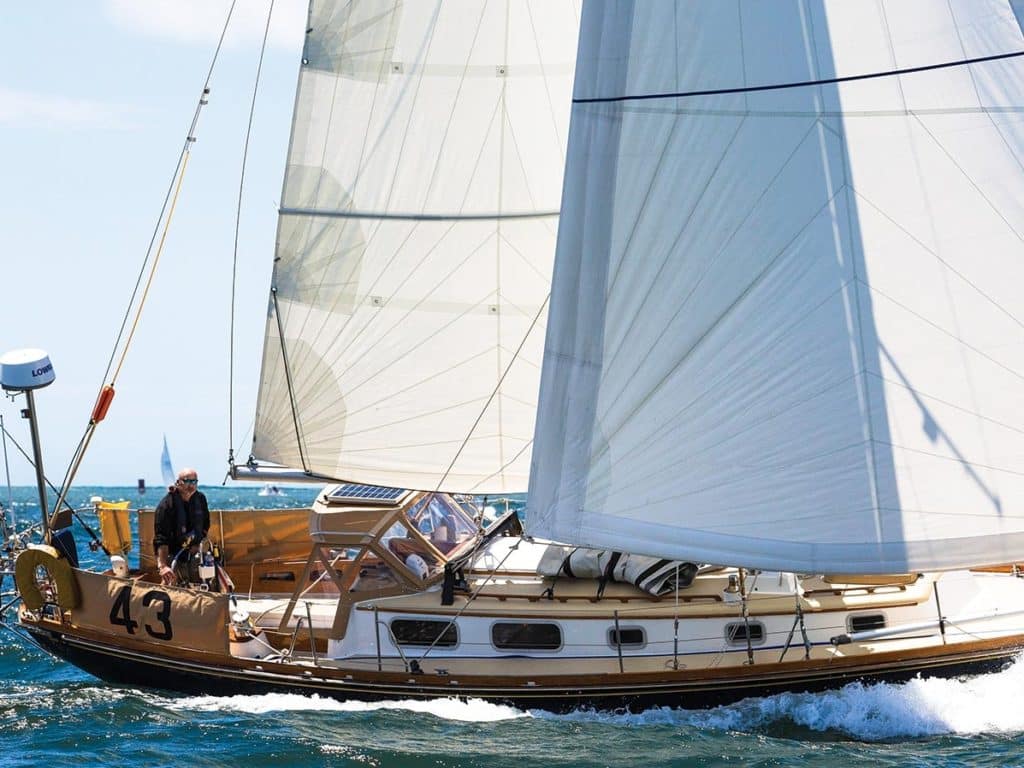
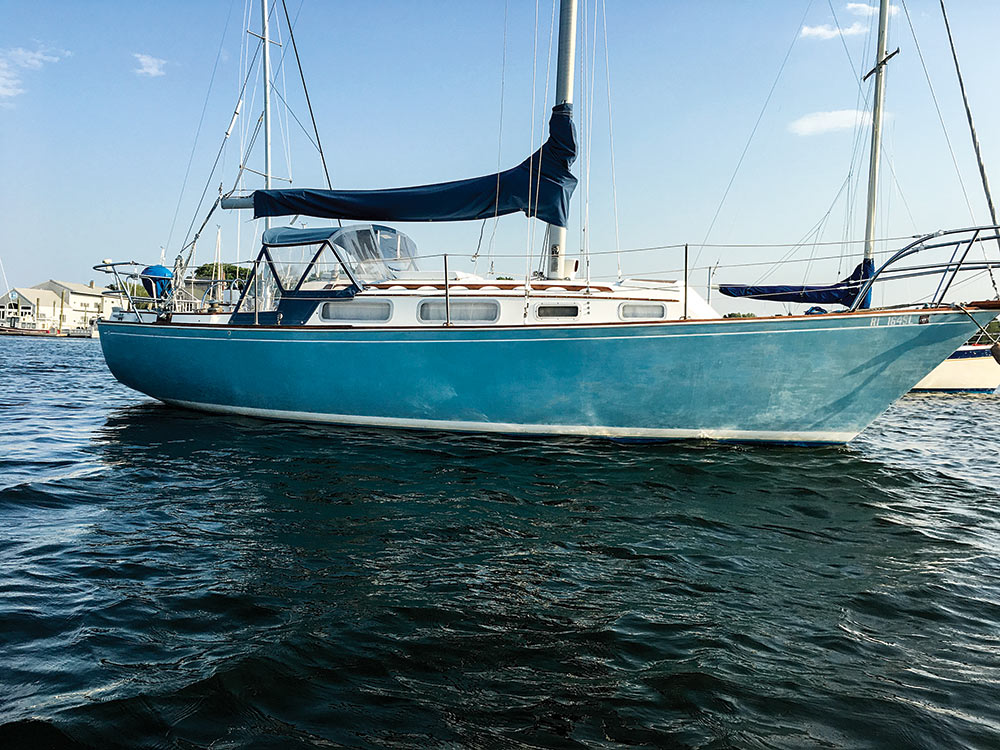
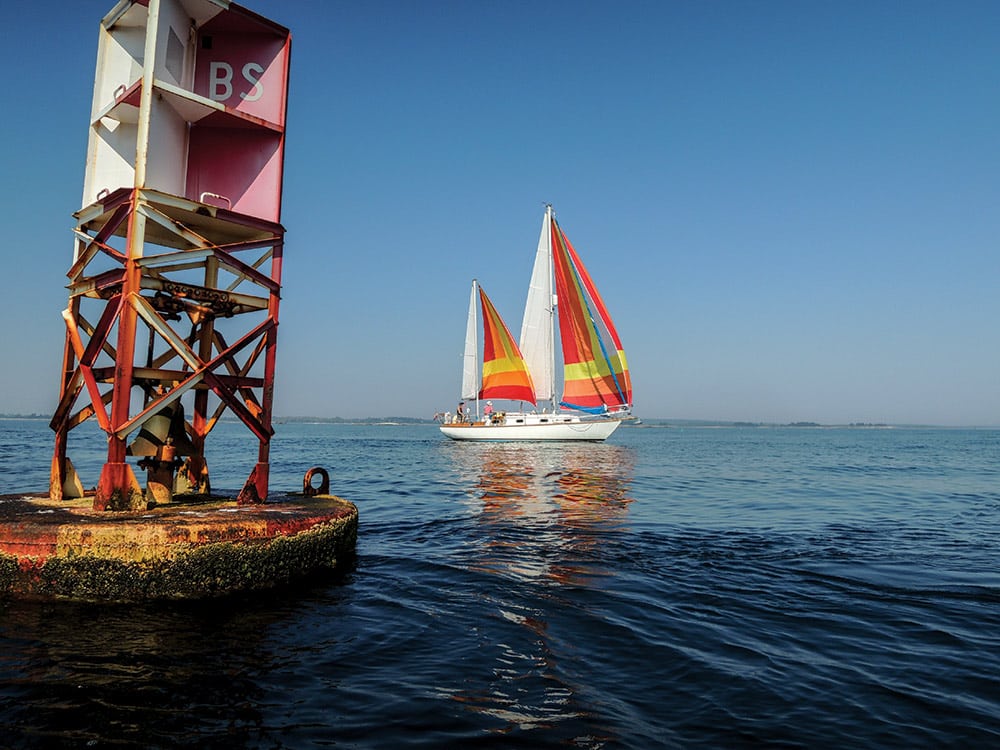
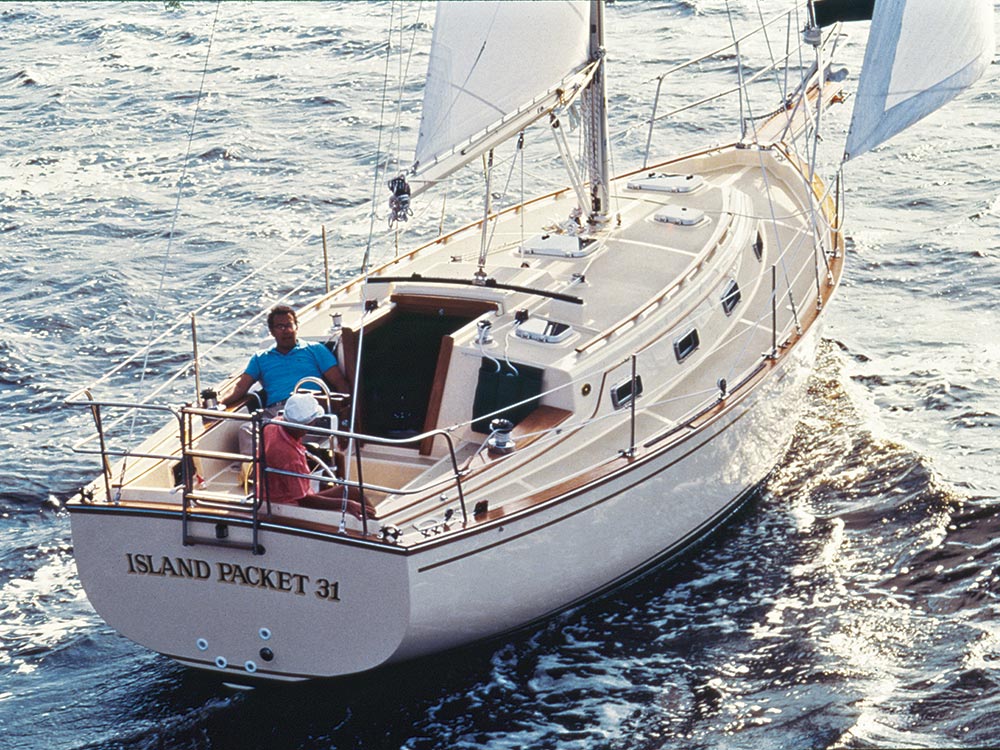
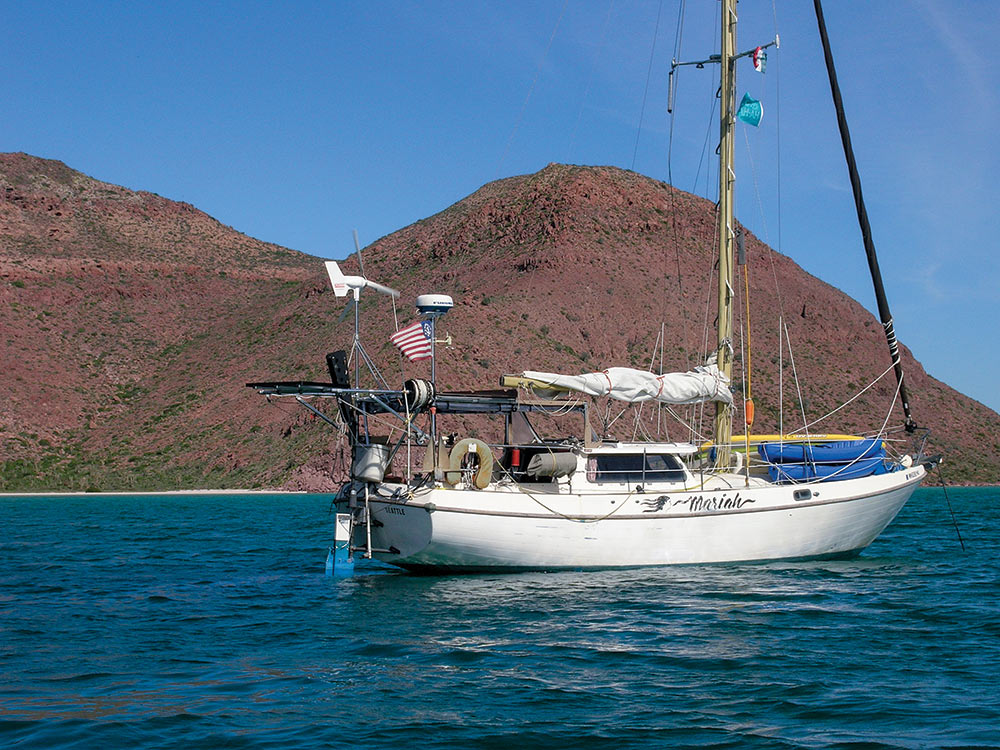
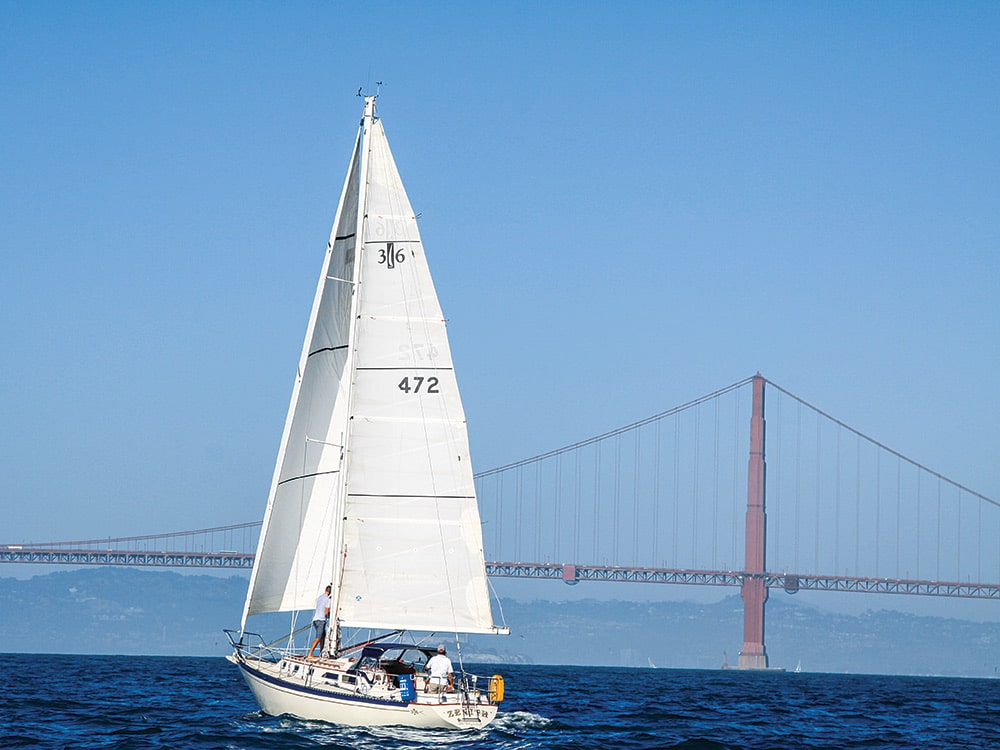
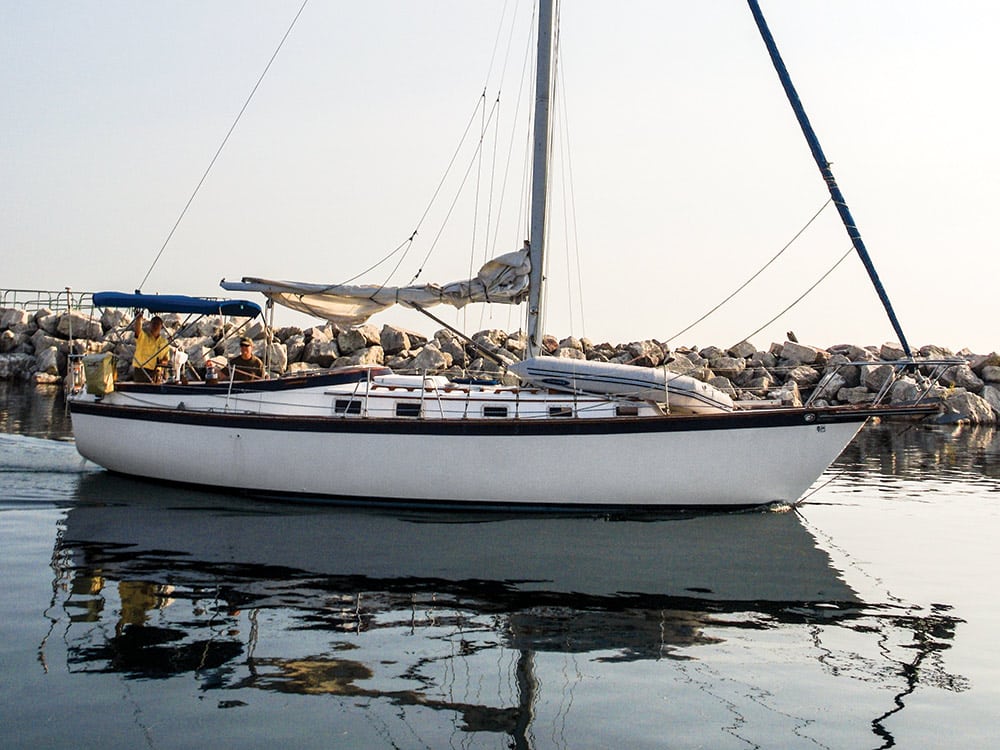
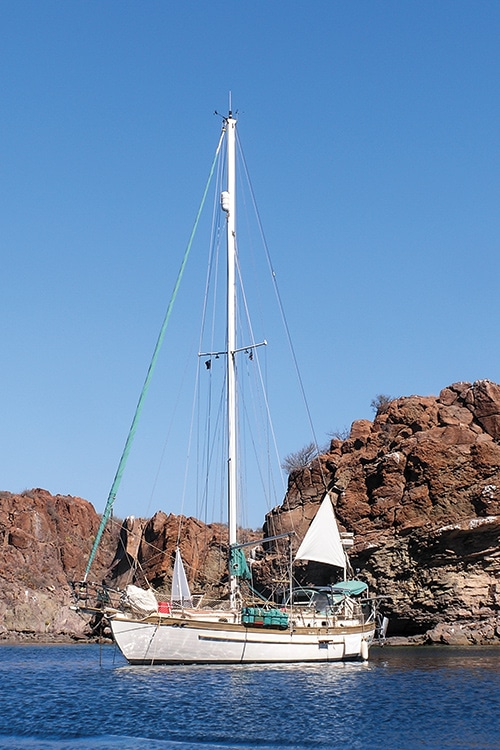
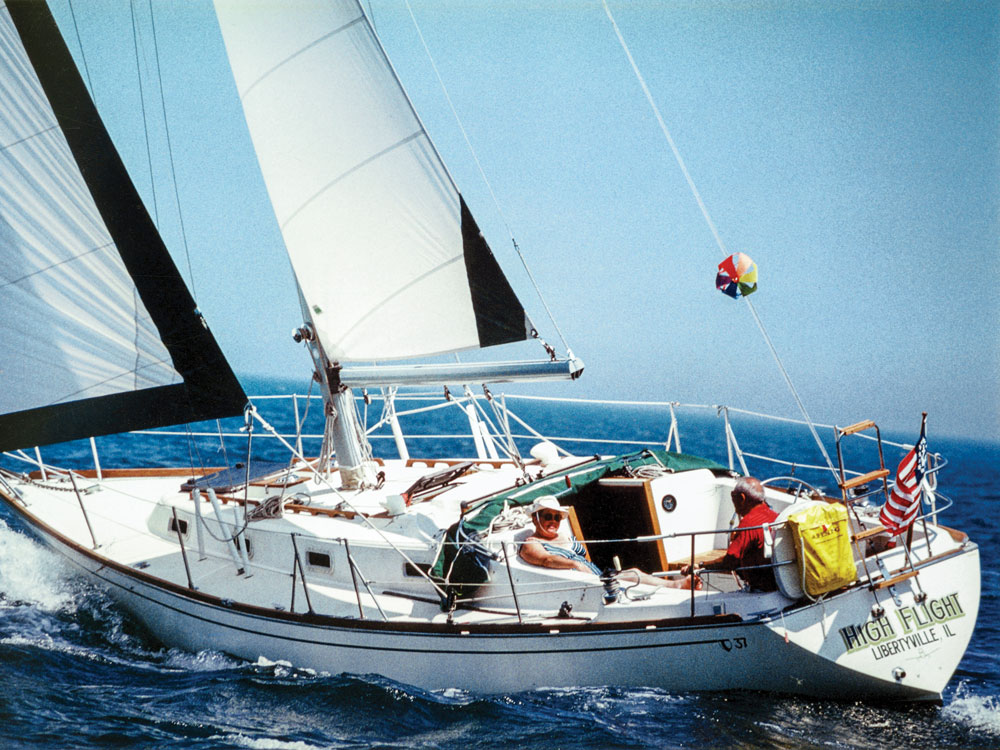
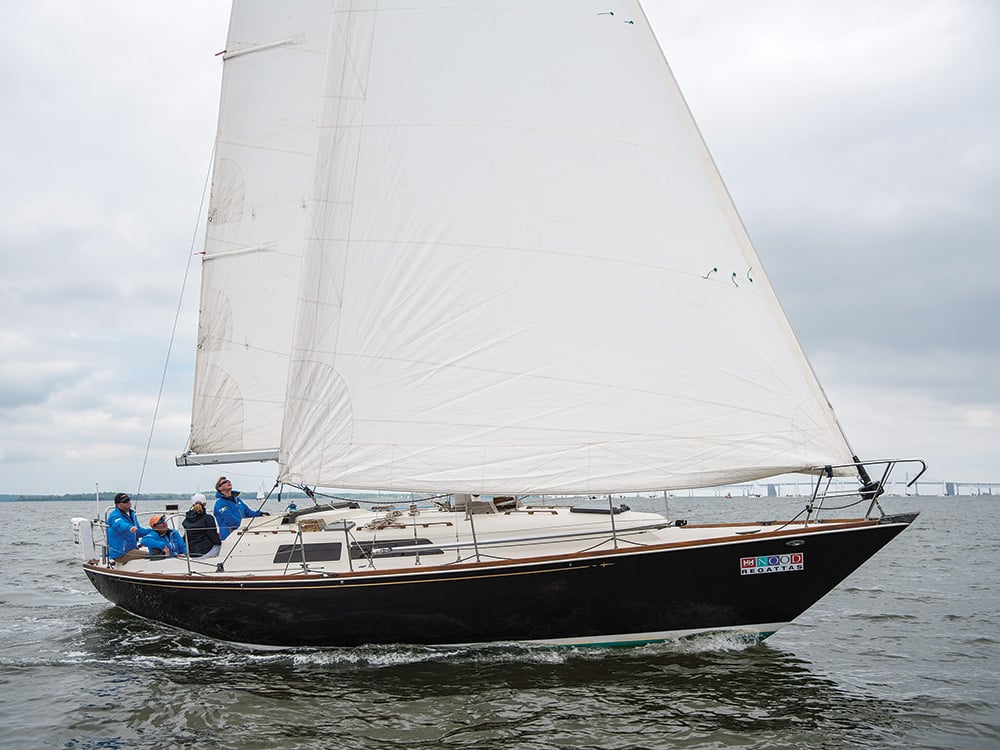























































COMMENTS
The best bluewater sailboats under 40 feet. 1. The Westsail 32. Westsail 32. Photo credit: sailboat data.com. The Westsail 32 is one of the most iconic bluewater cruisers. Built by the Westsail Corporation in the 1970s, this plucky, small sailboat has developed a cult following over the decades. Since 2009, 19 have set out to cross the Pacific ...
The best bluewater sailboats under 40 feet include the Westsail 32, Hunter e33, Tayana 37, and Najad 355. These bluewater sailboats, depending on your situation, can suit your needs for offshore sailing or long distance cruising. Sailboats under 40 feet also tend to be an adequate amount of space. After a detailed analysis, the best bluewater ...
Any list of bluewater cruising sailboats must include a Robert Perry design. I could have easily put together nine Perry boats for this list. The Nordic 40 may surprise some, especially because 40 feet is an iconic length, bringing to mind such boats as the Valiant 40, Hinckley Bermuda 40, Bristol 40, Pacific Seacraft 40, Passport 40 and others.
Length: 35′. Courtesy Gemini Catamarans. The Gemini Legacy 35 is a bluewater sailboat under 40 feet designed with a focus on stability, safety, and ease of handling. Its catamaran design, with a beam of 14 feet, provides remarkable stability both at anchor and underway.
Here are 13 world-famous bluewater sailboats under 40 feet that you should consider to take you on long-distance voyages: Sailboat. Designer. LOA. Key features. Contessa 32. David Sadler. 32 feet. Long keel, narrow beam, moderate displacement, stable and seaworthy.
With these considerations in mind, here are my picks—five top choices for affordable bluewater cruising sailboats (in alphabetical order). Caliber 40 LRC. The Caliber 40 design appeared in 1991 and through its evolution into the 40 LRC, remains a very attractive cutter. It has a fully encapsulated, elongated fin keel, and the ballast to ...
The range of Swedish-built Hallberg-Rassy small blue water yachts is one of the most impressive of any manufacturer. Boasting four yachts under 40 feet, they put their nine decades of expertise into both center cockpit and aft cockpit ocean-going cruisers and have the awards to show for it. From the Hallberg-Rassy 340, which manages to pack ...
The 10 best bluewater boats. 1. Westsail 32. Photo credit: SailboatData.com. The Westsail 32 is one of the most iconic bluewater cruisers and 19 have set out to cross the Pacific in the PPJ rally since 2009. In 1973, this small cruising sailboat garnered a 4-page spread in Time magazine.
Catalina 275 Sport. Catalina 275 Sport Billy Black. "This is a complete package; it's a good sailing boat and well-thought-out. It's definitely ready for prime time," says Boat of the Year judge Ed Sherman. Click here to read why the Catalina 275 Sport won Best Pocket Cruiser in 2014.
Most people want to do this in a sailboat between 40 and 65 feet long, all in all. Larger yachts are, more or less by definition, bluewater boats. ... 10 Best Offshore Bluewater Sailboats. ... It's a sloop and was designed to be sailed under main alone for easy single-handing. The boats are incredibly well-built and sturdy.
21 March 2024. 96,098 2 minutes read. Our editorial staff selected 7 bluewater cruising sailboats from 26 to 42 feet, from all over the world. Bluewater sailing is a type of ocean cruising: it refers to long-term open sea cruising, for example, passages (ocean crossings). Bluewater sailing implies a lack of support and requires a certain amount ...
Supposedly, more Beneteau hulls have made bluewater passages than any other brand. Consider a Dufour, Jeanneau, or the Beneteau Oceanis series, and realize that you can get a 40-something-foot boat that's under 10 years old for under $175k. The hulls are usually solidly built, so if you update the rigging and sails, check the keel and rudder ...
Vancouver 28. Photo credit: YachtFathom.co.uk. A sensible small boat with a "go-anywhere" attitude, this pocket cruiser was designed with ocean sailors in mind. One of the best cruising sailboats under 40 feet, the Vancouver 28 is great sailing in a small package. Hull Type:Full keel with transom hung rudder.
Table of contents. 1. Cape Dory 30. If you're looking for a quality, affordable bluewater sailboat, the Cape Dory 30 is definitely worth a look. This boat has been cruising the world's oceans for over 30 years and has a well-deserved reputation for being sturdy, reliable and easy to sail.
Review: Xquisite 30 Sportcat Top 10 Best Boats 2024 Nominee. The new Xquisite 30 Sportcat looked like a drag racer, tugging at her dock lines at the Annapolis sailboat show. At 30 feet, she was by far one of the smallest boats in the water, but this carbon speedster looked like she'd give the big boats a run for their money.
Oyster is one of the world's top bluewater cruising sailboat brands. Built in the UK, Oysters are finely crafted seaworthy yachts that capable of ocean passages and circumnavigation, with their most popular models being in the 50-70ft range. The Oyster Collection features current Oyster yachts for sale as well as videos, reviews, and guides.
Below, the Tartan 3700 has two cabins and one head with a stall shower. The saloon has the space of a much bigger boat and there's a full-sized nav station which is perfect for long-distance cruising. A new 3700 will set you back around $400,000, and 10 to 12 year-old Tartan 3700s list for between $170, 000 and $220,000.
Bluewater used sailboats for sale by owner. Home. Register & Post. View All Sailboats. Search. Avoid Fraud. ... 40' Norseman 400 New England USA, Rhode Island Asking $125,000. ... Show all sailboats for sale under: 15 20 25 30 35 40 45 50 55 60 70 80 (feet LOA) | Multihulls: ...
Additionally, the Prout Snowgoose 37 can fit into a single-hull marina, reducing berthing costs when compared to most other catamarans. If you have never considered a catamaran in the past, the Prout Snowgoose 37 may change your mind. Prices start near $45,000, with later models reaching over $100,000.
Tayana 37. 4. Pacific Seacraft Mariah 31: Here's another boat that seems to be a response to the Westsail 32. Pacific Seacraft (now under new ownership) still produces some very desirable bluewater cruisers today, but the Mariah (not to be confused w/ the newer PSC 31) is vastly different than her modern day siblings.
10 Sailboats Under 50 Grand. You don't need to break the bank to find an affordable, capable sailboat. By Dan Spurr Updated: April 4, 2018 My wife used to subscribe to a magazine titled Budget Traveler, which features low-cost vacations and tips like turning your sport coat inside out to prevent wrinkles in the suitcase. ... 437 sq. ft. (40.6 ...
Allures 51.9 price: €766,000. The Ovni 370 is another cunning new aluminum centreboard offering, a true deck saloon cruiser for two. The designers say the biggest challenge was to create a ...
Best Catamaran Sailboat: Maine Cat 38. If you're looking for a catamaran sailboat under 40 feet, this may be the one for you. The Maine Cat is unique because it offers a wide-open cockpit that lets you do most of your living up on deck, even when the weather is less than ideal. The Maine Cat 38 is easy to sail even single-handed, and ...